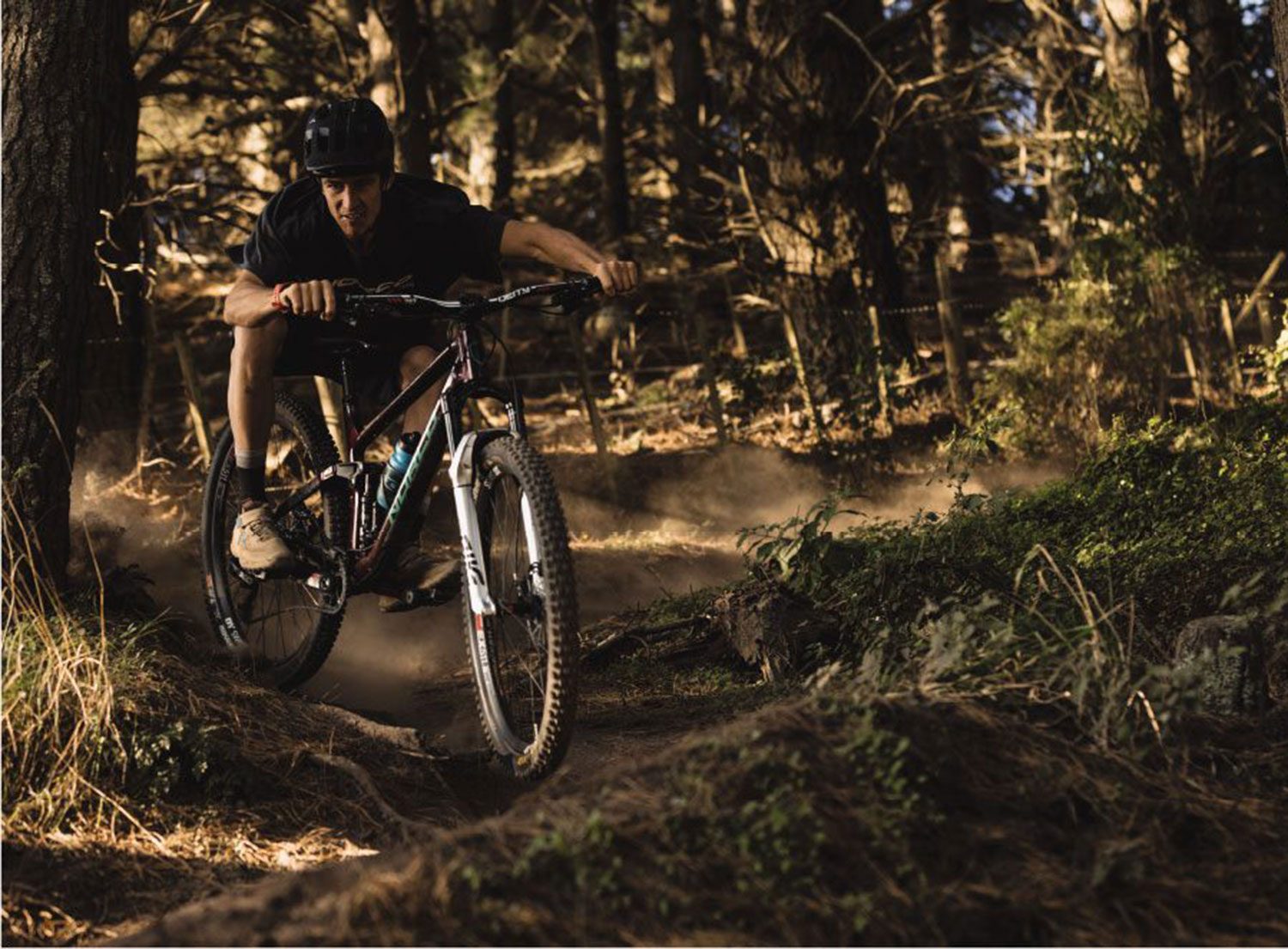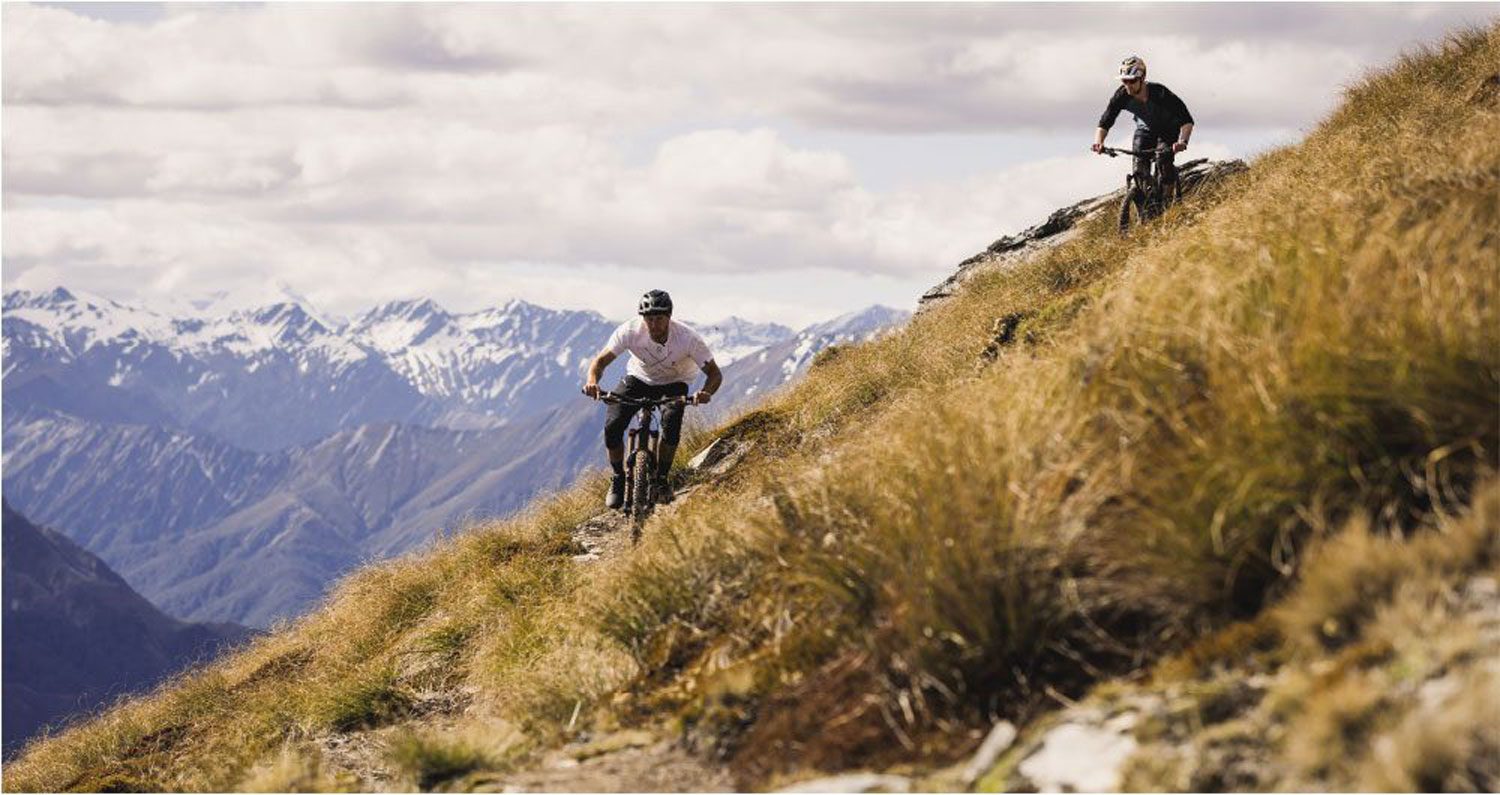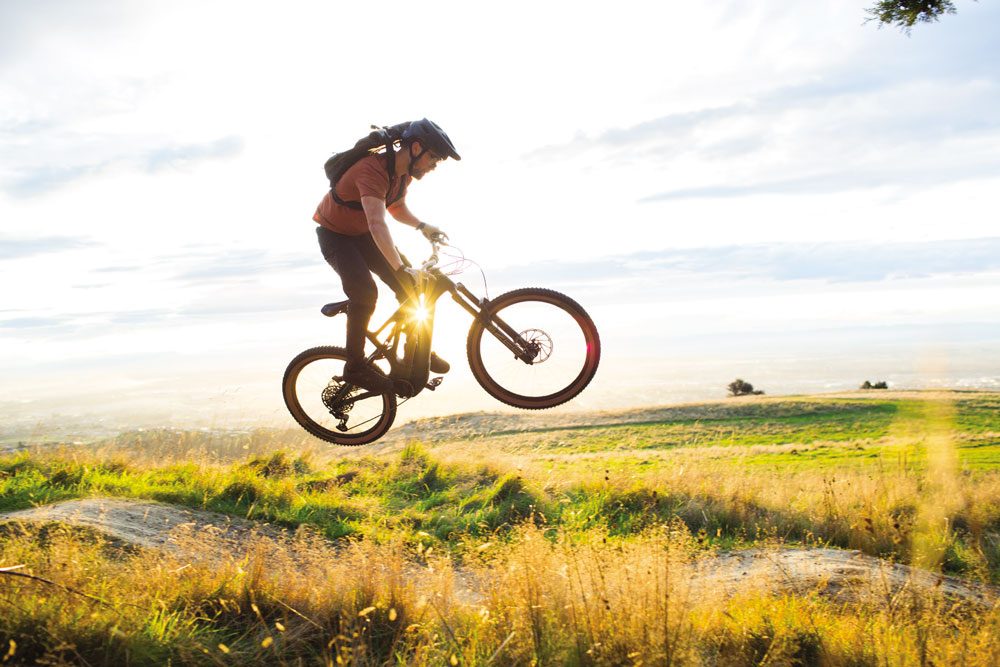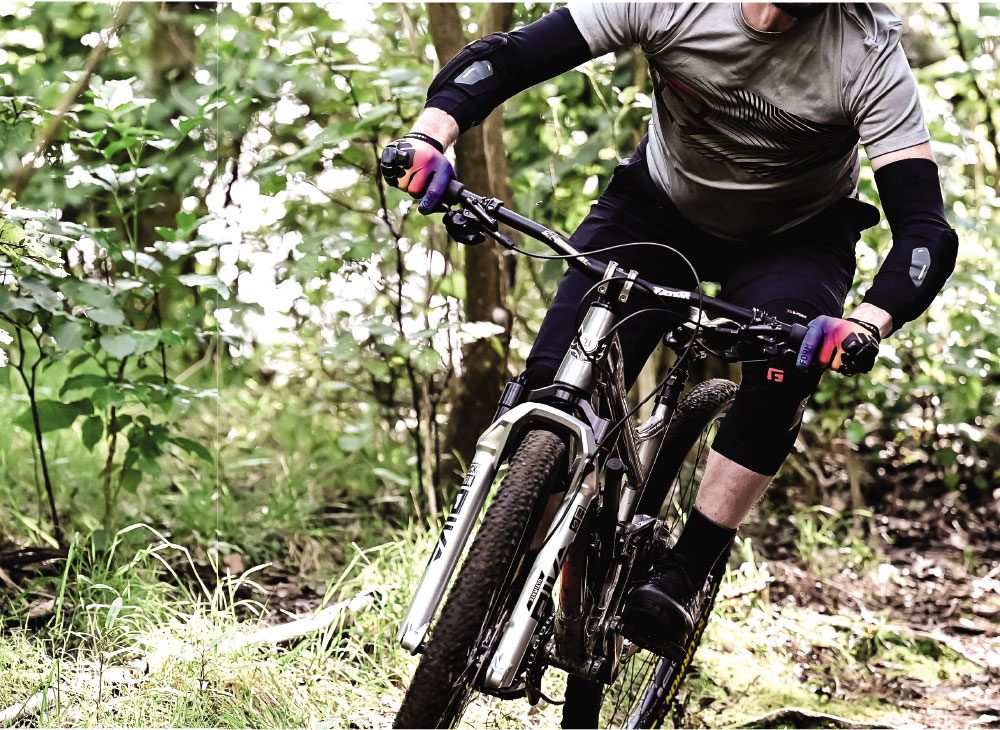An interview with Sam Blenkinsop
Words: Lance Pilbrow
Photography: Cameron Mackenzie & Sven Martin
I’m two minutes into our Zoom interview and Sam is juggling kids on his lap. Prior to this, he’s been on another Zoom, negotiating deals that will form part of his 2023 season. Undoubtedly, his kids will have let his potential sponsors know that Sam, their dad, should really be giving them his undivided attention. But this is the new normal for Sam. The Juggle.
Most New Zealand Mountain Biker readers will be familiar with Sam Blenkinsop in some form or another. If longevity is a sign of success, then Sam could arguably be New Zealand’s most successful downhill mountain bike rider, having been riding professionally for 19 years. He’s been a fixture on the NZ riding scene for as long as many of us can remember. I personally remember watching Sam ride at the 2006 Rotorua World Mountain Bike Championships where he came second in the juniors. I was blown away by how fast he was riding and just how much style he had on the bike — his bike seemed to effortlessly drift through corners, through the air, always slightly sideways, slightly tweaked. Somehow, he made it look more fun than anyone else.
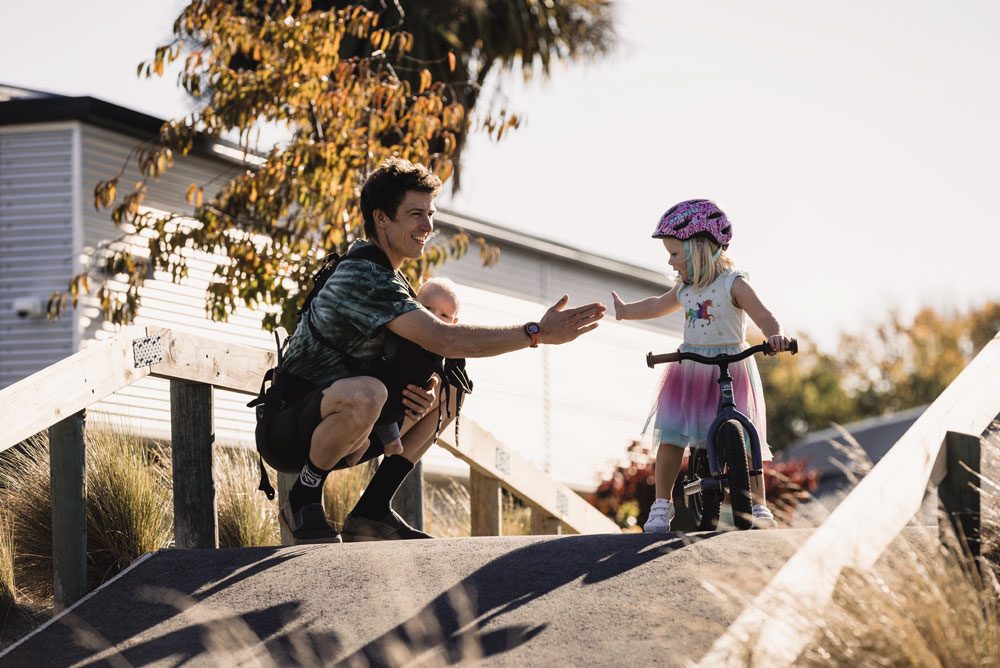
Fast forward to 2022 and Sam is now one of the seasoned veterans on the World Cup circuit. And a lot has changed over that time. Most notably, he now has a wife and two children to join him as he moves around the globe following the UCI circuit. With his experience on the circuit, and confidence to try something different, in 2022, he ditched the established way of doing things, bought a motorhome and hit the road racing; wife and two kids along for the ride too, as support crew. “We purchased a motorhome in the UK, and just drove the whole of Europe,” says Sam. “We did something like 9000km.”
Having recently toured New Zealand in summer with my own family, I’m well aware that life on the road isn’t always plain sailing. The idea of taking a family on the road, managing a race schedule and the pressure of performing at an elite level made me wonder if he’d had a few too many knocks to his head. But he assured me it was fine. How was it for his wife, Lysh, though? “It was hard for Lysh, for sure. She had to deal with our younger one in the motorhome; there is all the feeding. Yeah, it wasn’t aways easy,” explains Sam.
Sam’s kids come in and out of view on his webcam. In the background, I can hear some fighting over toys, and I’m imagining doing all of this inside the close confines of a motorhome — for six months. On the whole, it’s clear Sam, at least, had really enjoyed the past season.
“To be honest, it was awesome,” he admits. “It was just so exciting having the family there. It was like learning a new way of racing; racing while being a dad. It was more interesting than other years because I was going to all these places I’ve been to for 19 years, but I realised I actually never saw them properly. Typically, I’d just be with the team and at the hotel, and I wouldn’t really enjoy the place as much. Now, I’d be at practice, then as soon as that was done I’d go hang out with the family and really enjoy everything. It was great being with them and not just having the race as the only thing. It was like being on holiday with the family, but getting to race too, which was like an awesome bonus.”
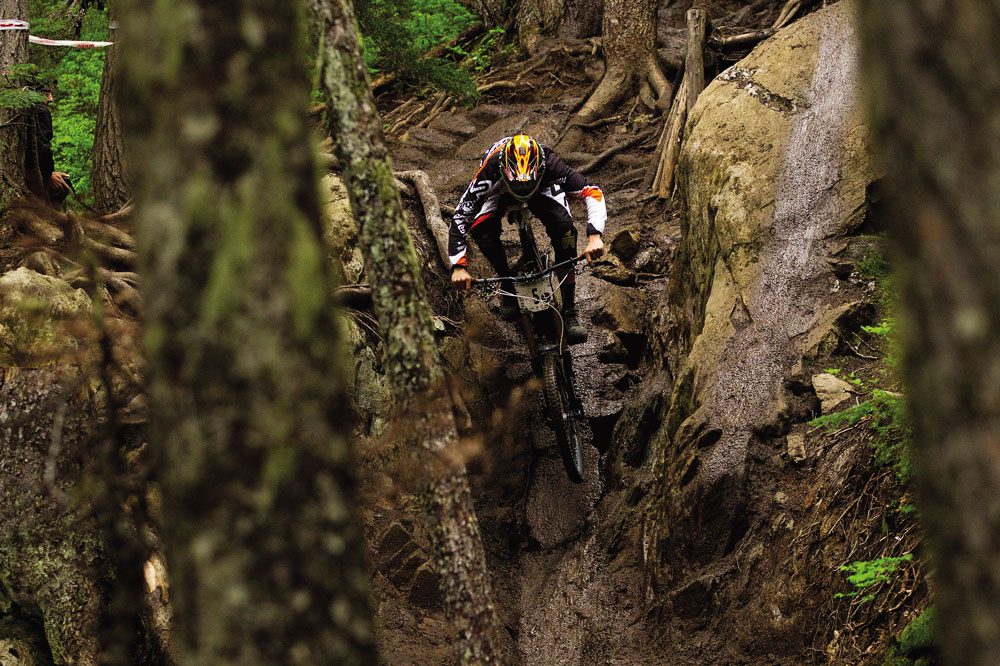
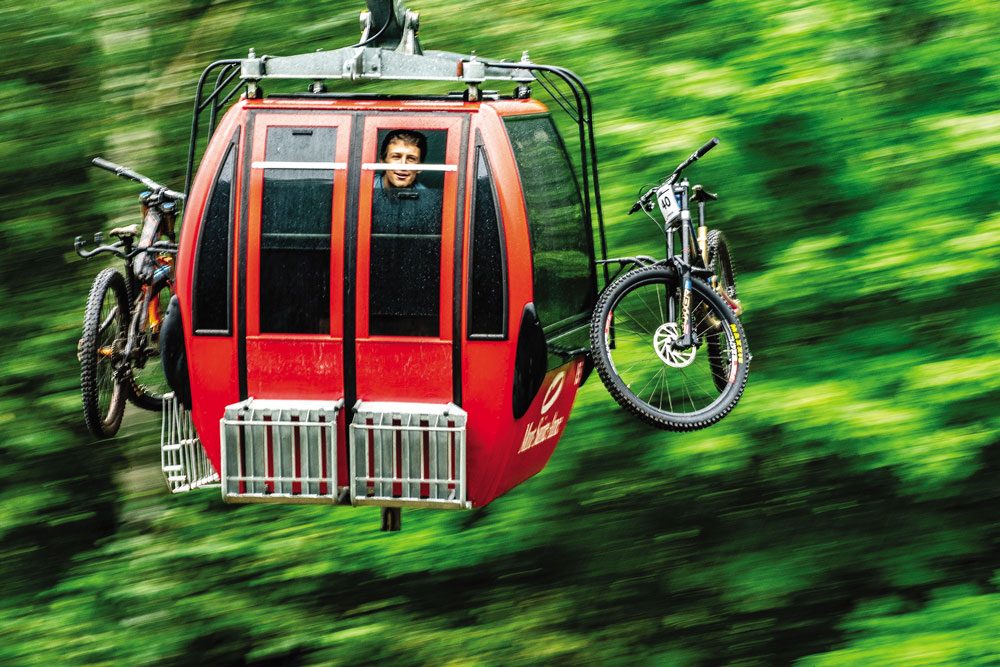
This change of pace seems to suit Sam. The more we talk, the more he seems to relax. He’s reflective on his time as a racer, and the privilege that has been, but also how the reality of being on the road has real downsides. “When you’re with a team, everyone can be in their own bubble and often they don’t really do much. It can actually be quite boring a lot of the time. It’s crazy!”
But he hasn’t always been this way, and he seems to be able to see his own evolution and maturity as racer. “When I was younger, I was more like how I see other younger racers now — it was just racing, racing, racing! Everything had to be absolutely perfect.” He laughs, seeming to sense a bit of irony at what he is saying. “But now I’m old!” I’m a little surprised at just how casual he seems about it all, he just seems to be more realistic. “I just feel like I know what goes into racing — what works and what doesn’t. But actually seeing places differently, that’s what changes when you become a parent. It’s interesting in new ways,” Sam laughs. “Now I’m just looking for the best playgrounds and parks!”
But despite the highs of having his family on the road with him, the challenge any professional athlete faces is that results still matter. So, I asked him if he had achieved what he wanted to this year? “To be honest, my race results weren’t where I wanted them to be. It was pretty frustrating,” Sam admits. “I would get a mechanical or a flat tyre, it was… annoying.” Fort William was one such race. He missed out on qualifying for the main event, a race that is usually one of his favourites and one he performs well on. “I got a flat tyre halfway down…. I missed out on qualifying by half a second.” This was a tough pill to swallow. “I hadn’t been that angry for a long time. We’d driven all this way, I’d been with the family, it was a week of shitty weather, everyone was cooped up in the motorhome, there were midges everywhere, kids couldn’t do anything.” I ask him if having his family there changed how he was able to cope with a disappointing race. “Having the family there changes everything. In the past, if I was at a race and I didn’t do well, I would be thinking, ‘man I wish I was at home’. But, with the family there, it was completely different. It was just like, ‘ah, it doesn’t matter, it’s just part of it’.” This family thing sounds like the ultimate racer’s edge: great support when things are tough and the people you most want to celebrate with when things go well. Like at Mt St Anne, in Canada, where he was back in the top ten: “The high of that whole weekend was really just having the family there with me. It was just the best thing ever.”
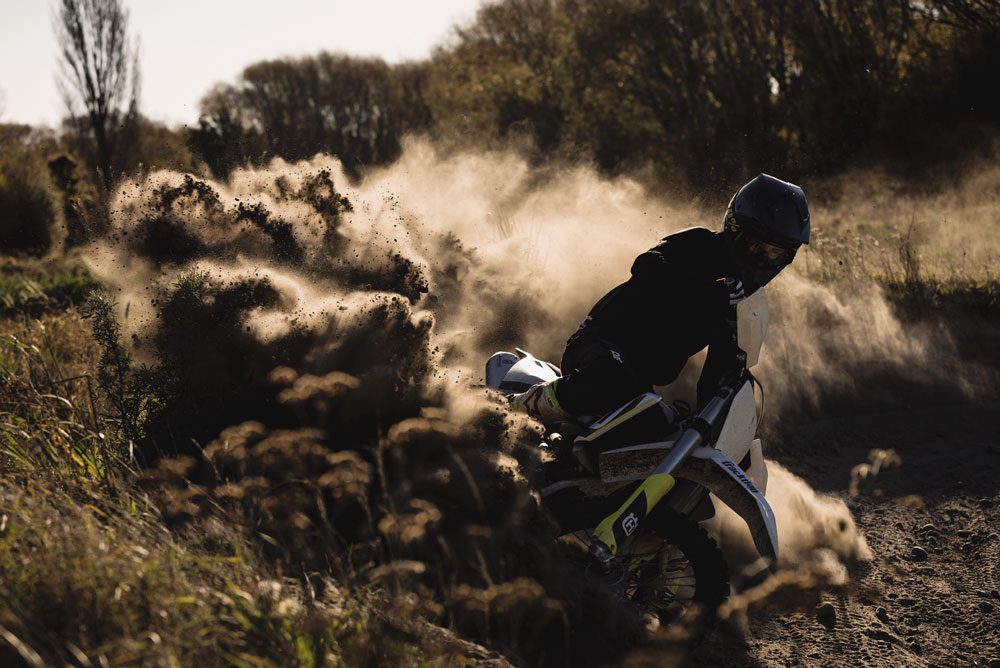
Sam seems to have been able to carve out a career as a racer that is pretty enviable, and the longevity of it all is unique. In fact, just staying healthy in a high risk sport like downhill is a challenge; always balancing risk and reward. “When I was younger, I just wanted to go as fast as I could,” says Sam. “But you figure out pretty quickly that it doesn’t really work well that way. You just can’t ride that way all of the time, ‘cause you just end up crashing.” I ask him if this is, however, just what is required to be at the very top? He agrees. “Those guys [Loic Bruni and Amuary Pierron] just ride at such a high level. The risk is so high. But, if anything happens, when they hit the ground, they’re done, the season’s over. I can ride at that pace too, but it’s risky. You need to be comfortable with it.”
Staying healthy, staying on the bike, and showing up to races year in, year out has helped Sam keep sponsors happy. He has just finished up a contract with Norco, after seven years working together, to explore something new. Now, he’s taking charge of managing his own sponsors and race schedule. This seems like a lot of work to me; I ask him why he’s doing it? “I always wanted to run my own program, and I’m finally getting a chance to do that. I feel like I’m going back to my roots — not like a privateer, I’ll have factory support and I’ll have a good budget — it’s just a simpler operation.” Being on the Norco factory team, Sam has seen it all. It’s big business with big overheads. “In a big team, the team takes everything you make them. The managers get paid because of you; the budget is massive to move a team around. I realised this year, in taking myself on the road, it just doesn’t actually cost that much. But, with a team, you’re spending so much money with hotels, mechanics, managers and different staff. The amount of money that gets blown is unreal. With Norco, about twenty people were involved with the team; mechanics, ex riders, masseuse, other staff, an on-track guy.
They were a Canadian team, so lots of them would go to the race and then fly back to Canada each week. The amount of money that got wasted… I couldn’t believe it. So I just knew I could do something simpler that would still allow me to make it work.”
Sam seems to be confident in his own experience. Confident he’s developed skills he can now use to help navigate the new reality of racing whilst also being a family man. “I’m excited about the direction I’m going in, I really feel I can be in the top 10 for sure. I still believe my riding is at that level. I still feel like I can be on the podium the weekends that the track suits me and I’m feeling good.” But the sponsorship side of things is a steep learning curve. “It was so much easier when I had a manager doing all this! Now it’s way harder. I’m just not used to doing it. I’m so Kiwi! We just don’t say, ‘I need this much money so could you please give it to me?’. We’re more reserved and sort of just end up asking for something, anything. Often, I’ll say a number and sponsors will be come back to me with; ‘we can do more than that — you should really be asking for more!’ So, I’m learning I need to be a bit more cocky really. Sponsors often have more to offer than I think they do. But I like that I’m learning all this.”
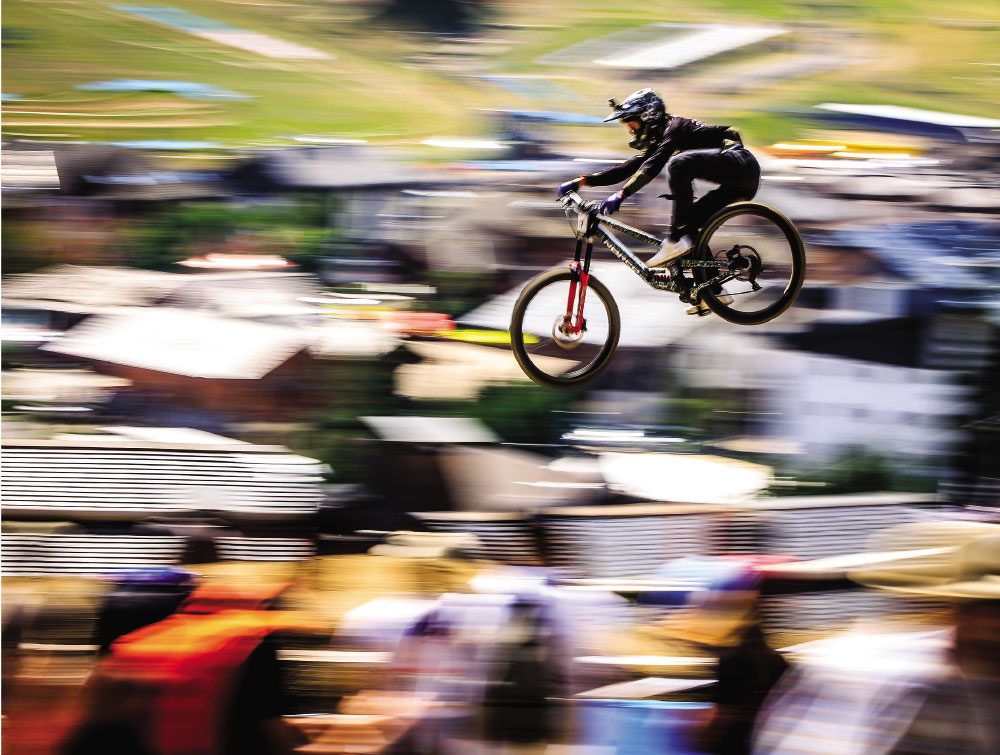
Taking charge of his own program is about creating new opportunities. For example, he’s getting to work directly with the brands he has always wanted to work with, and working with them directly instead of through a manager or a team. “So often I’m hearing the brands say how good it is to be dealing with me directly. They’ll tell me they’ve always wanted to work with me, not this other person or a team I have been associated with. Often, they just want to do a little deal with me directly but they’ve had to negotiate with the whole team. So it’s cool to be able to work more directly with the actual companies and hear this kind of stuff.”
It’s not all plain sailing, though, and even trying to ensure he gets enough support to run the lean operation that he has in mind for next year has challenges. “It’s hard at this time, all the sponsors are tightening up. They’re not selling as much and everyone is overstocked, and everyone’s freaking out, and just taking so long to return calls and emails.” But Sam’s confident it will all come together, and he’ll be back on the circuit next year. He won’t tell me what bike he’s riding just yet, but he’s obviously excited about it. “I’ve pretty much got everything locked in but there are still a couple of things we’re waiting on. In terms of the industry, to be honest, it is probably the worst time to do it.” But he’s enjoying the new challenges of management, and of the conversations he is getting to have. “It’s just great to be able to choose the people I want to work with, and work with the people I like to work with. Everyone that I’m working with is a friend; I’ve worked with them for years and they are fans of me and I feel like I’ll be able to have a long future working with them. I was with Norco for a long time, and a part of me was just thinking, ‘this would be good if it carries on forever’, but in other ways a fresh start is exciting too.”
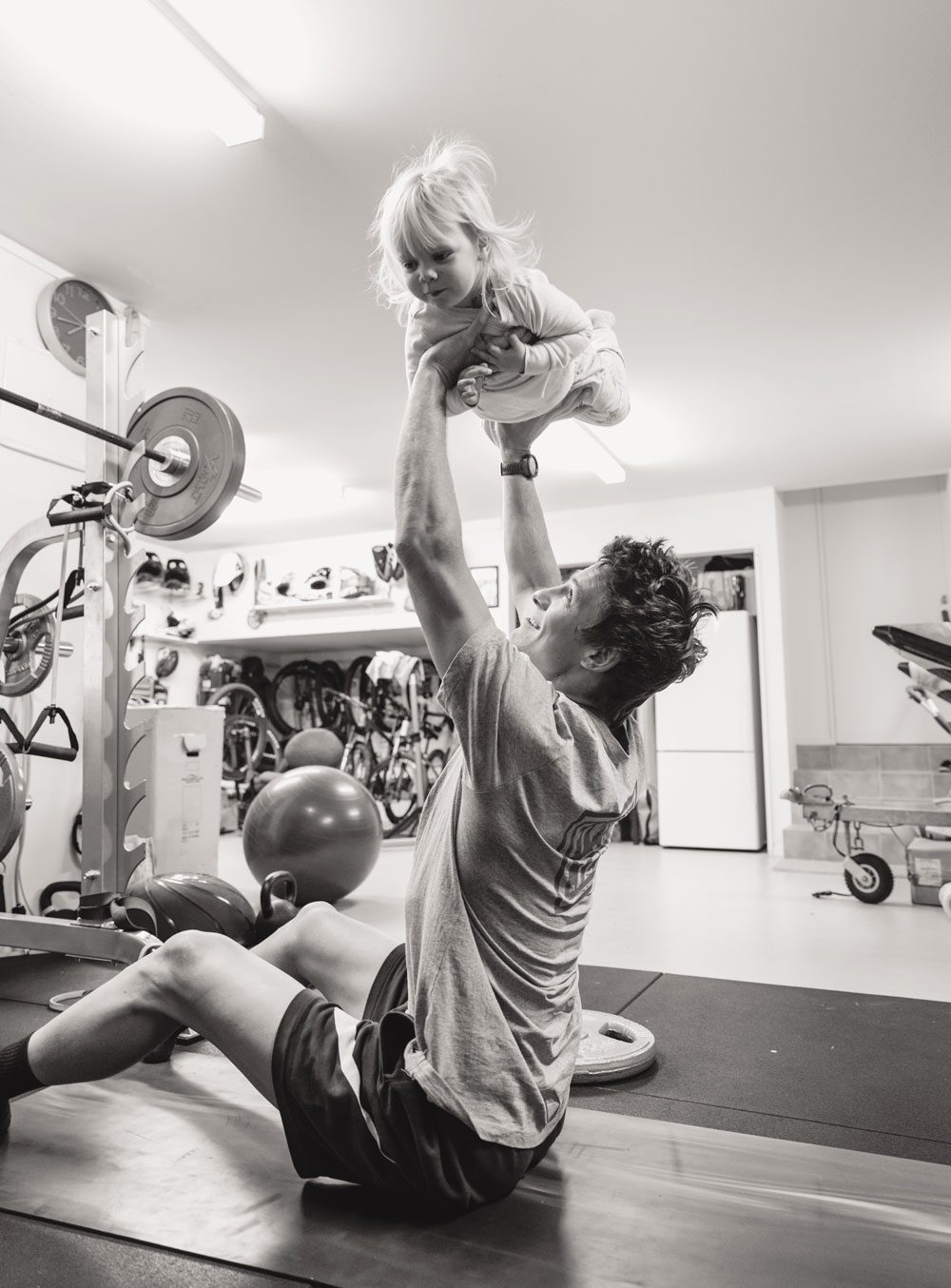
There are other changes on the horizon, too. Not least of all Discovery TV taking over the broadcasting rights to the UCI Mountain Bike World Cup. Something that has a lot of riders, Sam included, curious to see how it all unfolds. It’s a complicated business working with the UCI, and the relationship between the UCI and riders has often been fraught. Plus, there are lots of unknowns. “We don’t even know how many people are going to qualify; how many people they are going to show on TV… It seems like they are trying to suck every cent out of us,” explains Sam, candidly.
On the other hand, Sam has always been a fixture on the Crankworx schedule, something some of the other riders don’t seem to prioritise. The reason is simple; “I’ve just always enjoyed the Crankworx events,” says Sam. “If you go to a UCI World Cup, the organisers don’t really care about you at all. You are the show, but they just aren’t bothered. The Crankworx guys, though — you go to the race, and they do everything for you. They are so supportive of you; they help you out with everything. You email the organiser and ten minutes later you’ve got an answer. They just really take care of the riders.” And the festival-style race schedule appeals to Sam, too. “All the events are so fun. They just pack the events in, too. You do one race one day, and if you do badly in that one race, you’re like, ‘oh well, I’ve got another race tomorrow’. It’s busy, and I like that. At Rotorua this year I had the downhill practice, slalom and pump track all in one day. The people love it. I’ve always told the organisers I’ll race these ‘til I can’t race anymore.”
Right now, however, it’s the off season and, for Sam, this means it’s time off the bike and a different pace of life. “I drop my daughter (Indie) at pre-school, then I take Blake (his son) for a spin in the bike trailer.” Family commitments mean Sam doesn’t have the luxury of training whenever he wants, either, so he’s being more efficient than ever with his time — doing weights in the garage before the children wake up being just one example. But his off season is more than just being off the circuit, its exploring other passions too. “I love hunting and spearfishing and that’s what I love doing when I’m not racing. This time of year I love those things even more than biking… Racing is so intense, but with diving you’ve got to really slow your heart rate right down and be relaxed. Plus, it’s all about just being in another environment. Hunting is the same, you have to be calm.”
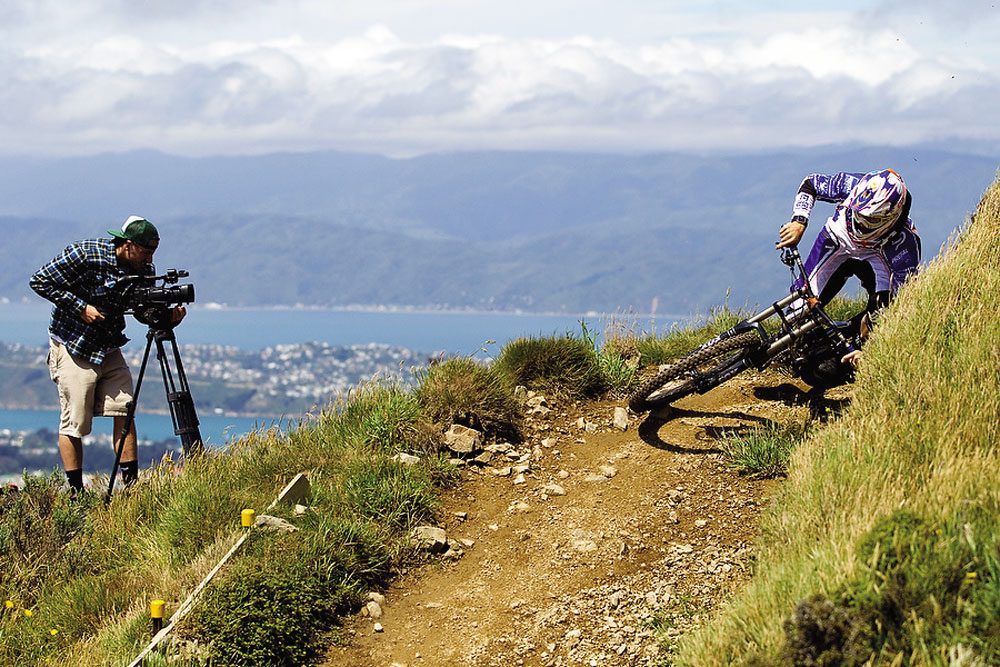
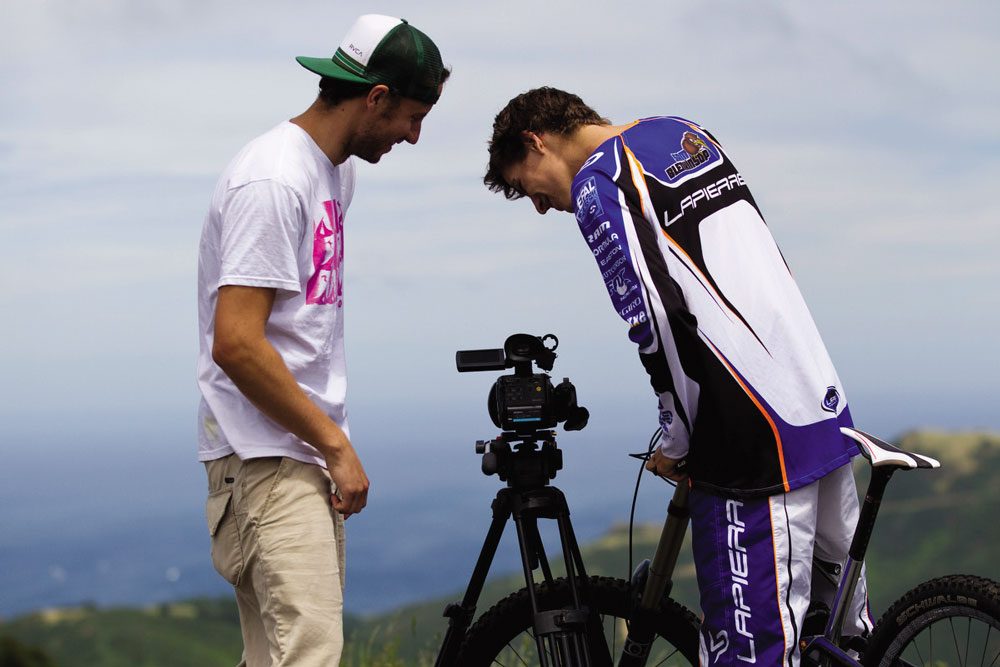
Nineteen years in any career that takes you on the road for six months of every year is a challenge that could wear thin, but it seems to suit Sam just fine. “I can’t stay in one place for too long. I don’t know how people live in one place for so long! After being in Christchurch for seven months, I’m ready to go back to Europe and start racing again. I just – still – love racing. That’s what I realised this year; I just love racing.” I ask him how he’s stayed in the game for so long, and how many other riders he seen come and go, and his answer reminds me of the day I watched him race in Rotorua: “I think it’s just because I enjoy it so much”. We talk about this for a while, and Sam mentions that one thing he’s wondered about is whether his ability to really enjoy life off the bike has helped him enjoy life on the bike even more. “I think, guys who didn’t stay in that long, all they did was ride their bike. I think if you’re just doing that all the time, you’ll get over it. It’s almost like they’ve put too much into it. To be honest, in my off season I hardly ride a bike. I just do other things – hunting, fishing, diving, and spending time with the kids. Just having other things going on aside from racing is so important.”
Sam acknowledges it hasn’t always been this way. Without being arrogant, he seems proud that he’s been able to evolve over the years to approach riding in a more mature way. “When you’re young you need to be on the bike all the time, you need to do that to get the skills and that’s exactly what I did. I just rode my bike every day, did dirt jumps, pushed up to do downhill runs, XC — whatever I could do. I spent every day on my bike, from dawn ‘til dusk. It was all about biking. But now, I know I’ve got those skills, so it’s more about having fun on the bike and enjoying it and not getting burnt out. It’s key to know when to train and when to stop – to avoid getting burnt out with training. It’s a learning thing — and I’m still learning.” He seems genuine. Genuine that he really does still just love riding his bike, but hungry for more too. “I feel like I’ve got a lot more in me. There’s a lot of young kids coming through the local scene, but they don’t seem to be able to beat me yet, so I might as well keep going.”
Might as well.
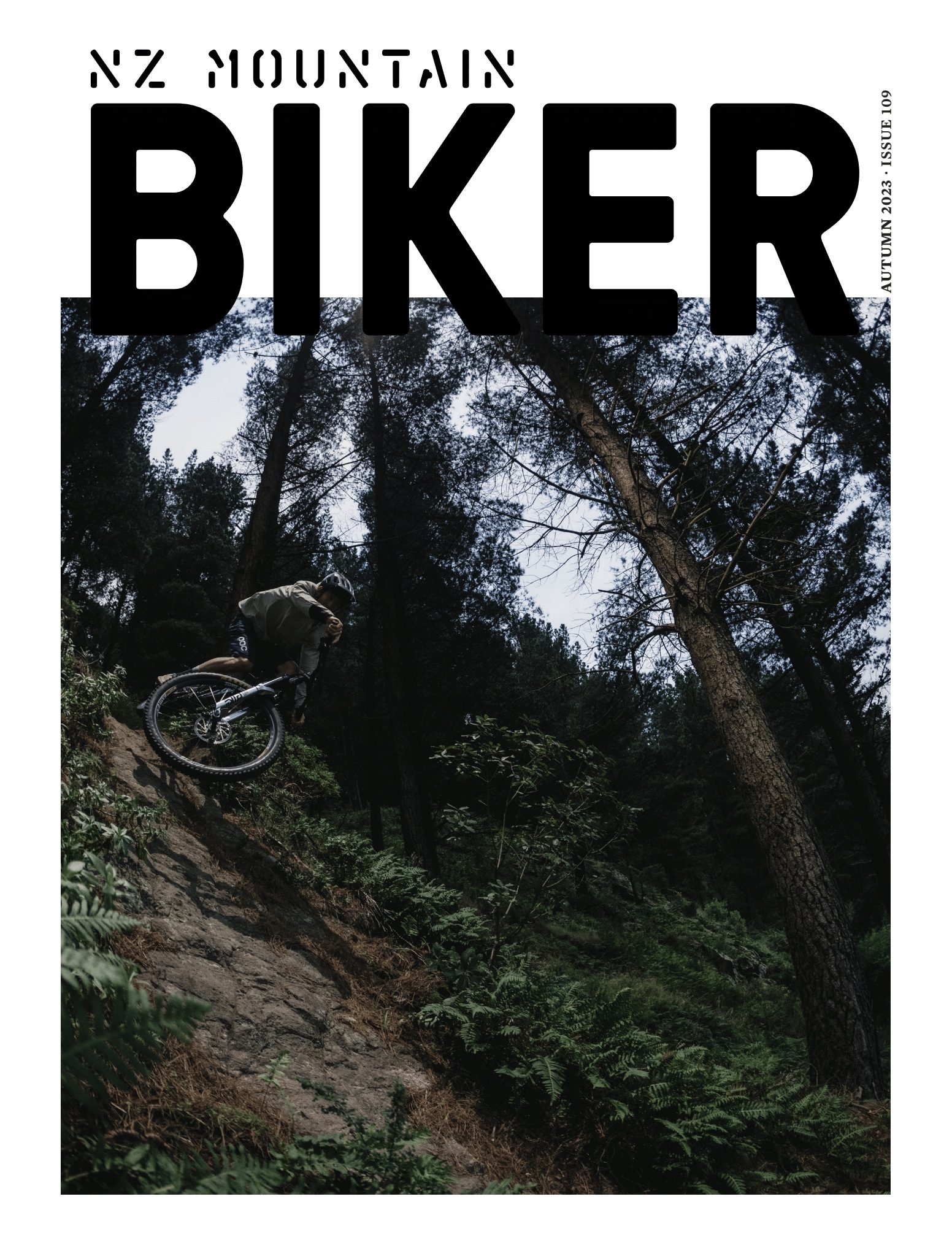
Queenstown = Dreamstown
Words by Jake Hood
Photography by Jake Hood, Cameron Mackenzie & Jay French
Can a photo be life changing? I’m not just talking about a photo that makes you go, ‘Wow that’s amazing!’, but an image that actually changes the path in which you are destined to take in life. It’s a turning point; a defining moment. Well, this is what happened to me.
Let’s turn back the clock a few years – back to when I had fewer wrinkles and a lot more hair. I was a know-it-all grom, working in a bike shop in Scotland. On my lunch break, I was flicking through a UK-based mountain bike magazine when I stopped turning the pages, captivated by this one image that caught my eye. It was a photo of a beautiful golden landscape, featuring three riders carving their way down this unbelievable bit of track that snaked its way through the orange, sun-kissed hillside. There were huge mountains in the background. The corners of the track looked like those perfect berms you only dream about, and dust clouds tailed the riders, highlighted by the evening sun. The golden orange light contrasted the dark moody hills perfectly in the background. It was such a defining photo. A photo that I needed to know more about.
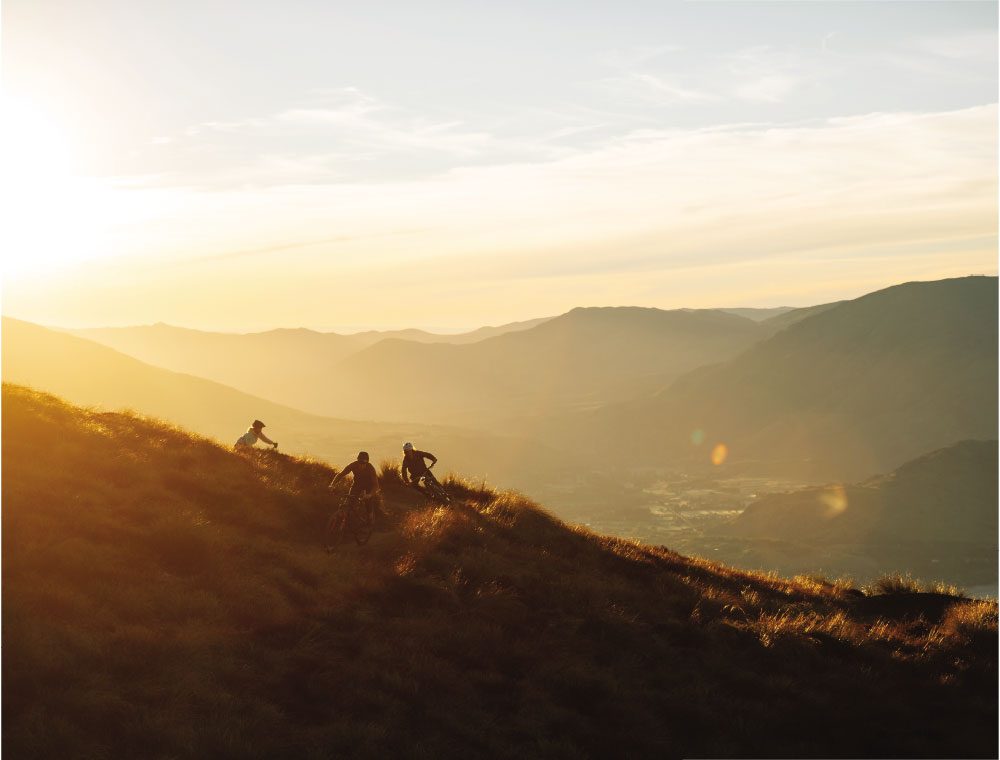
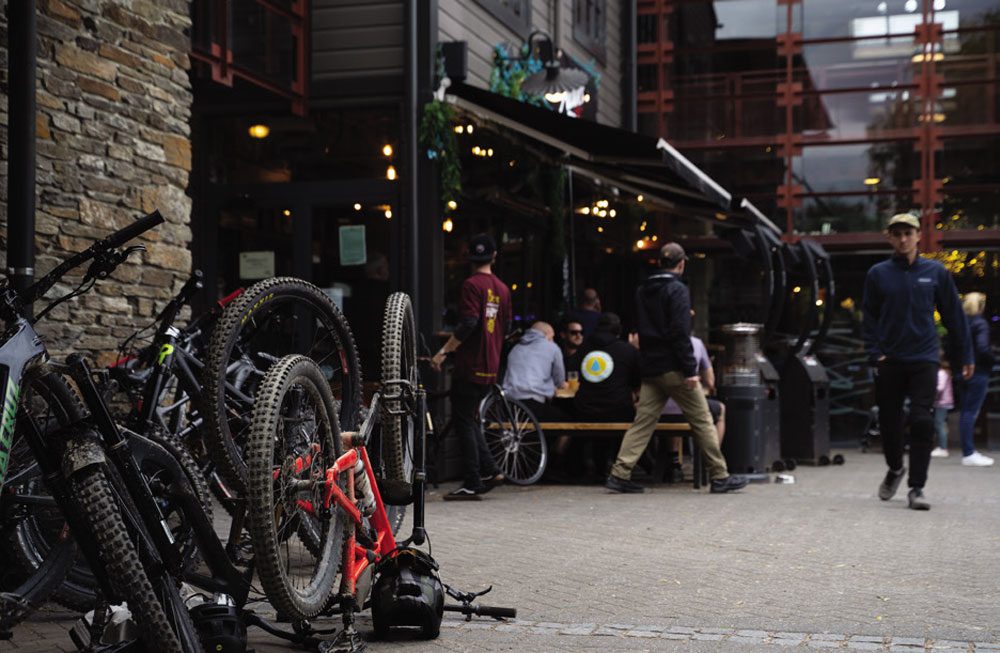
FROM THE MOMENT I STEPPED OFF THE PLANE, I KNEW THIS PLACE WAS SOMETHING SPECIAL.
‘Where is that?’ I thought. ‘I need to see this place, I need to experience it for myself! It looks like paradise.’ Well, it turned out to be Queenstown, New Zealand – or as I like to call it: Dreamstown.
A couple of years after first seeing that photo, I moved to Aotearoa New Zealand, the land of the long white cloud, and set up camp on the alpine shores of Lake Whakatipu. From the moment I stepped off the plane, I knew this place was something special. The mountain air felt dense. Jagged, craggy mountain peaks towered over the lake, while the small, sunny town below basked in the late evening sun. The energy of the town seemed to echo through the valleys. I remember getting a taxi from the airport to town and seeing the Skyline Gondola for the first time. It literally went straight up – like, vertical. How was that even possible?! How could there be trails off that hill? My mind was blown. The first summer I spent here, I experienced as many of the myriad trails as possible. I would finish work and commute home via the gondola back to Fernhill. There were just so many trails to explore and places to see. I kept having to pinch myself to remember I was really living here, in Dreamstown. This place really made an impression on me. But something weird happened after living and riding in this amazing place for a summer. I started to realise that it’s not just the landscape, town or trails that make Queenstown oh-so-special. Yeah, these aspects are amazing, but there is something else that makes this place special… I’ll come back to that later.
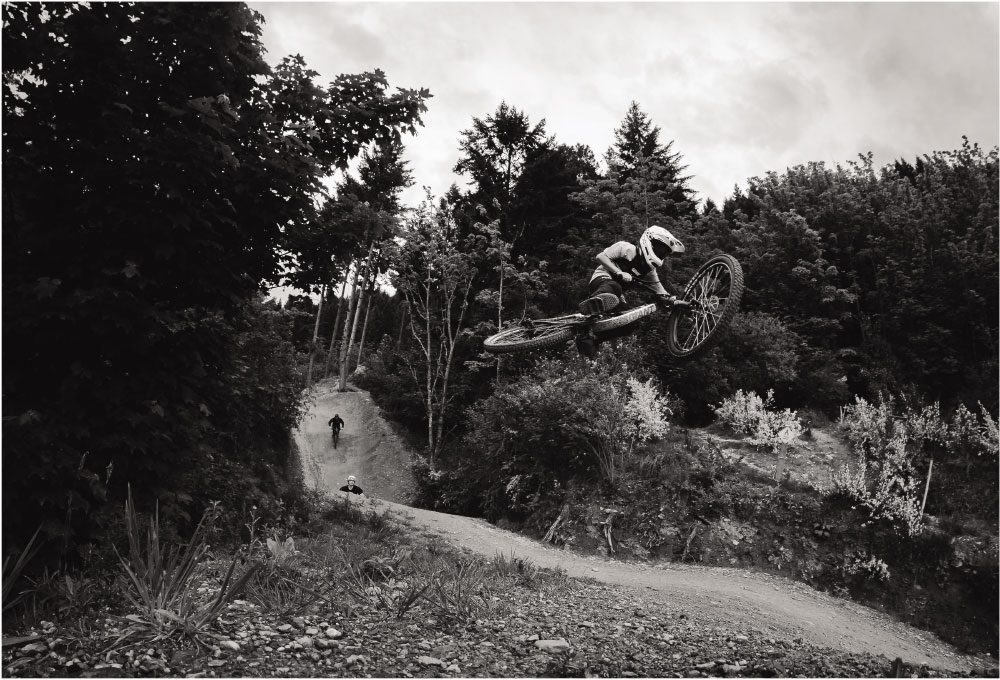
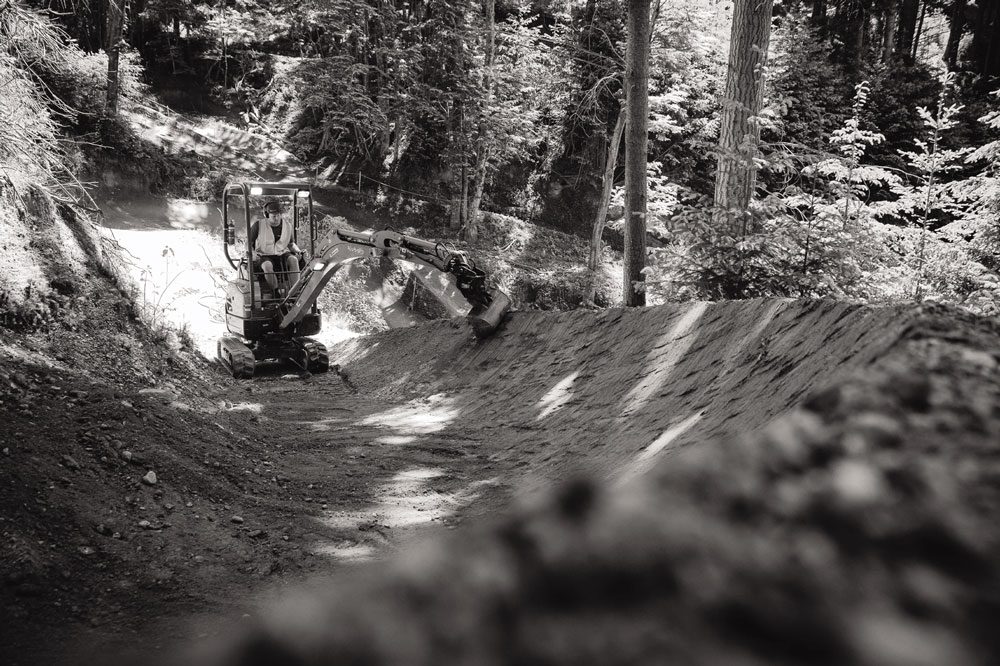
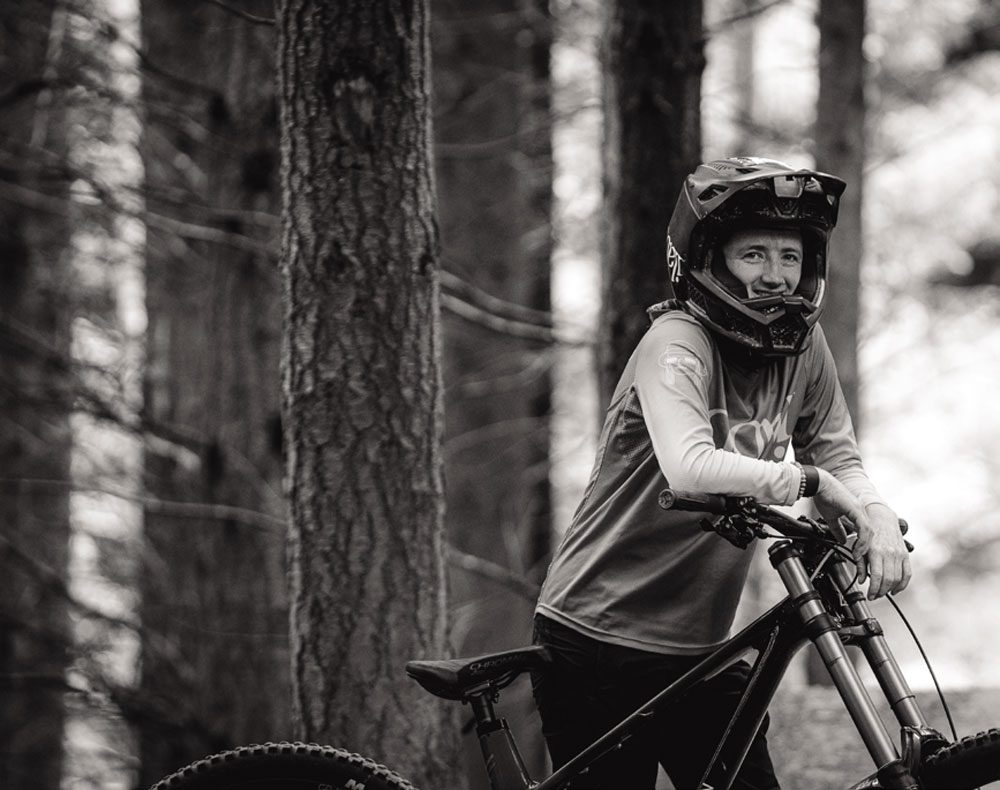
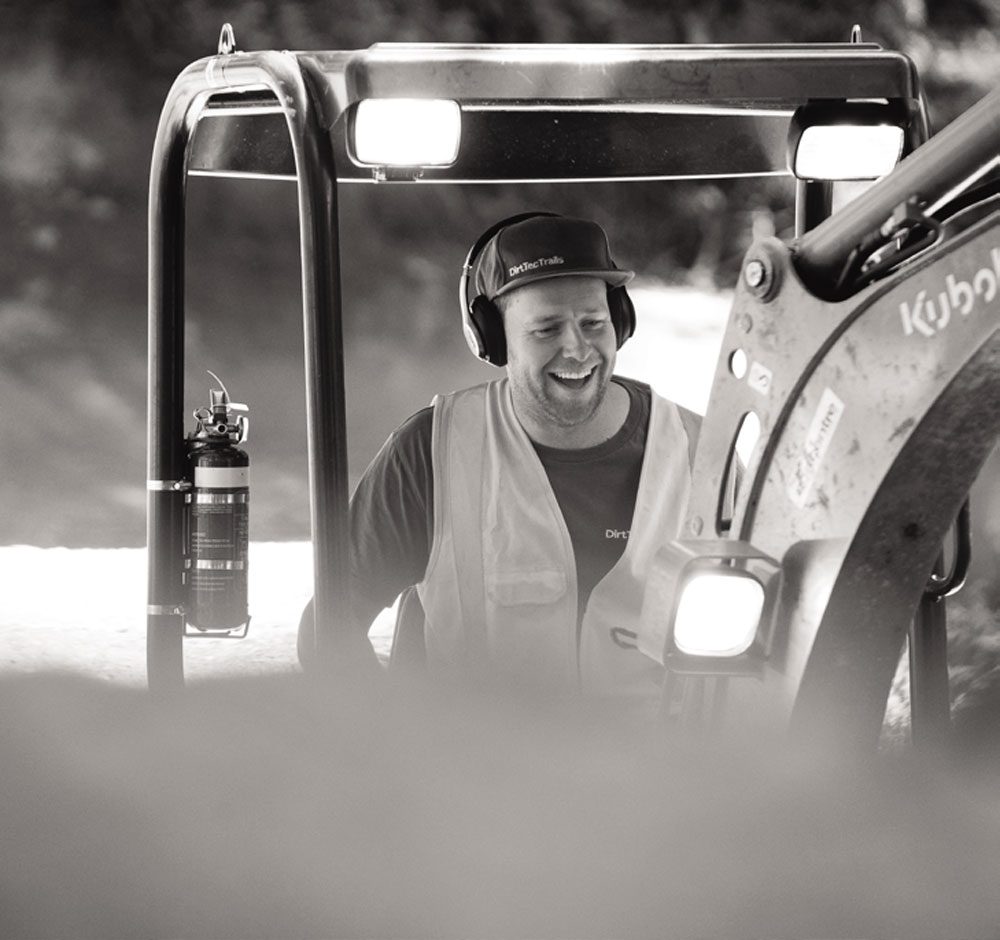
It would be hard not to talk about the trails whilst on the topic of Queenstown. There is such a variety, spanning the 7 Mile riding area to Arrowtown. Over a weekend, you would be lucky to just scratch the surface of the amount of riding there is. Every year, this network grows, and us Queenstown riders get better and better trails. In the past few years, the quality of new trails has skyrocketed. The driving force behind this movement are Elevate Trail Building and Dirt Tec Trails. Tom Hey from Elevate Trail Building started shaping the trails of Queenstown in 2013, with Rude Rock being one of his first builds, supported by Queenstown Mountain Bike Club (QMTBC) and and Queenstown Trails Trust (QTT). This trail was an instant classic and is now known across the world. Since then, Tom’s been shaping the dirt, rocks and roots of Queenstown into some of the finest bits of singletrack on the planet. Like an artist with his paintbrush, he has this amazing ability to build perfect bits of trail that become instant hits. Kepler Rek, local trail building legend, was working at Skyline Gondola from 2013-2015, as a lifty and running trail maintenance. In 2015 he started transforming the Ben Lomond Trails and moved up the ranks to the manager of the bike park. This is when the bike park started to transform into what it is now – up there as one of the best in the world. Before 2015, all the trails had a bit of an old-school feel about them; very fast and straight. Nothing lined up well; they were very janky, you could say. Once Kep was on the scene, he started the process of transformation. The first big shift in the park was Huck Yeah – a Queenstown Mountain Bike Club-funded jump trail in the park. This was the catalyst for the rest of the park getting rebuilt. Things got de-janked, rebuilt and realigned – and safety was also improved. It was such a shift forward, and every year things kept getting better in the park. More trails were built with more variety of terrain, including new blue and green trails, so riders of all abilities could test their limits. It was the shift the park needed and involved a more ‘new school’ way of building. It also brought the trails up to a modern, sustainable standard that improved flow whilst also leaving character. In 2017, Kep joined the Elevate Trail Building team. From that point, Tom and Kep went on to build and shape the next generation of Queenstown mountain bike trails, such as Nearly McGnarly and Hot Rod – trails that are now world-famous. Last year alone, Nearly McGnarly was ridden 75,000 times and Hot Rod was ridden 67,000 times. These are trails that work for all abilities, from beginners to the best riders in the world. It’s these types of trails that are helping get new people into the sport and giving beginners a place to improve their skills in a safe environment. For many people visiting Queenstown, Nearly McGnarly and Hot Rod are on the must-ride list – but there is so much more to be enjoyed. From flowing beech forest singletrack, like Missing Link, to Creaky Winder and steep, techy trails like Salmon Run – and everything in between. Throw some jumps into the mix, such as the world-famous Dreamtrack, Gorge Road Jump Park, and Kerry Road pump track, and you’ll find something for everyone to enjoy. Just last year, Kep went on to start his own company, Dirt Tec Trails, with Skyline taking a back seat in running the bike park. Dirt Tec Trails is now in charge of all the maintenance in the park and I have to say, the park has never been better. Dirt Tec Trails is also lending a hand to other projects around town – most recently, the new BluGazi trail. To say we are spoiled for passionate trail builders in Queenstown is an understatement. With two of New Zealand’s best trail builders living here, it’s easy to see why Queenstown, as a biking destination, is known around the world.
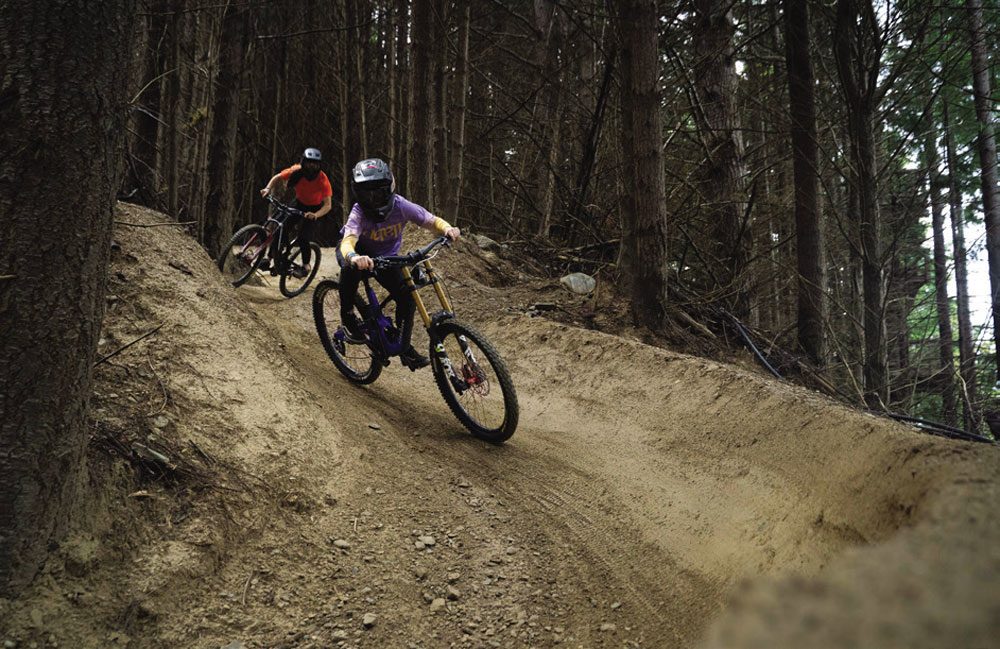
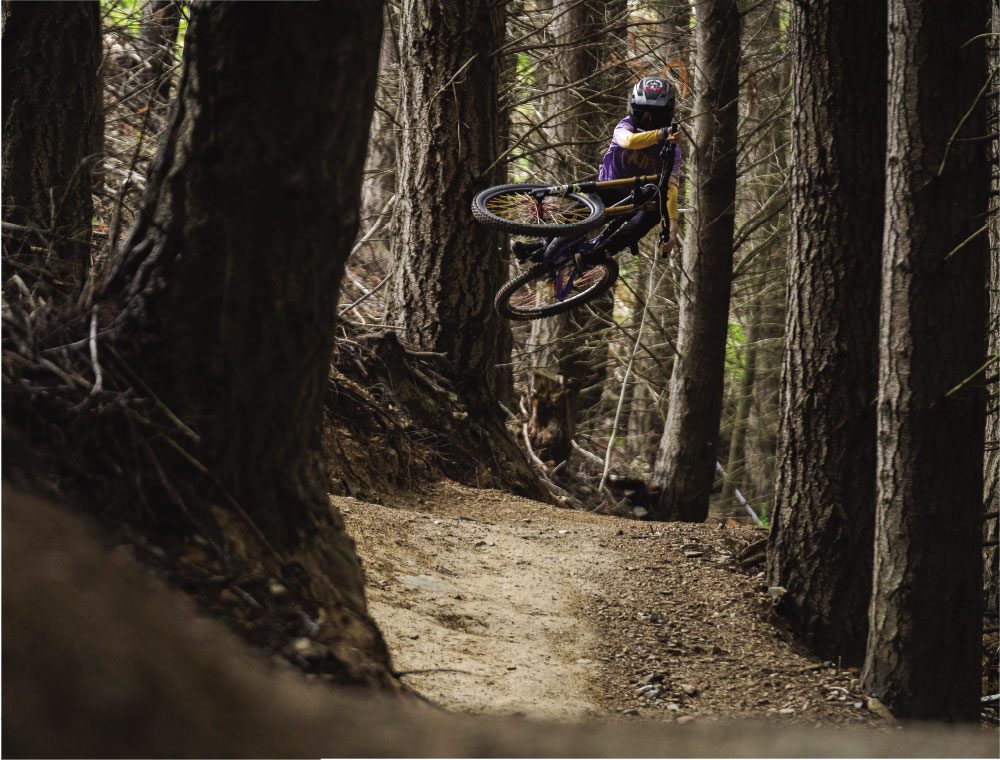
The other big reason Queenstown’s mountain biking scene is what it is today comes down to all the hard work put in by the QMTBC. Since forming in 2003, the club has really brought to life the vision of so many people, making Queenstown a world-famous destination for mountain biking. The amount of work these local legends get done is nothing short of a miracle – and it’s all volunteer work. There is an ever-changing group that takes the reins of this juggernaut of a club. Every year at the AGM, club members can nominate themself to become committee members for the following year. This constant change of committee members keeps the club moving forward and ensures fresh ideas come in year after year. These committee members are the true unsung heroes of the mountain biking scene in Queenstown. From trail network planning and gaining land consents, to running weekly dig nights, local jump sessions, fundraising events and getting new members on board, the work this club achieves is endless. What the club gets done is monumental but, through all this, we have this amazing thriving group of locals that just keeps growing and growing. Every year, membership numbers go up and the club receives more consent for trails; the community grows, and new trails get built. Overall, this club has been such a benefit to the Queenstown region and its community.
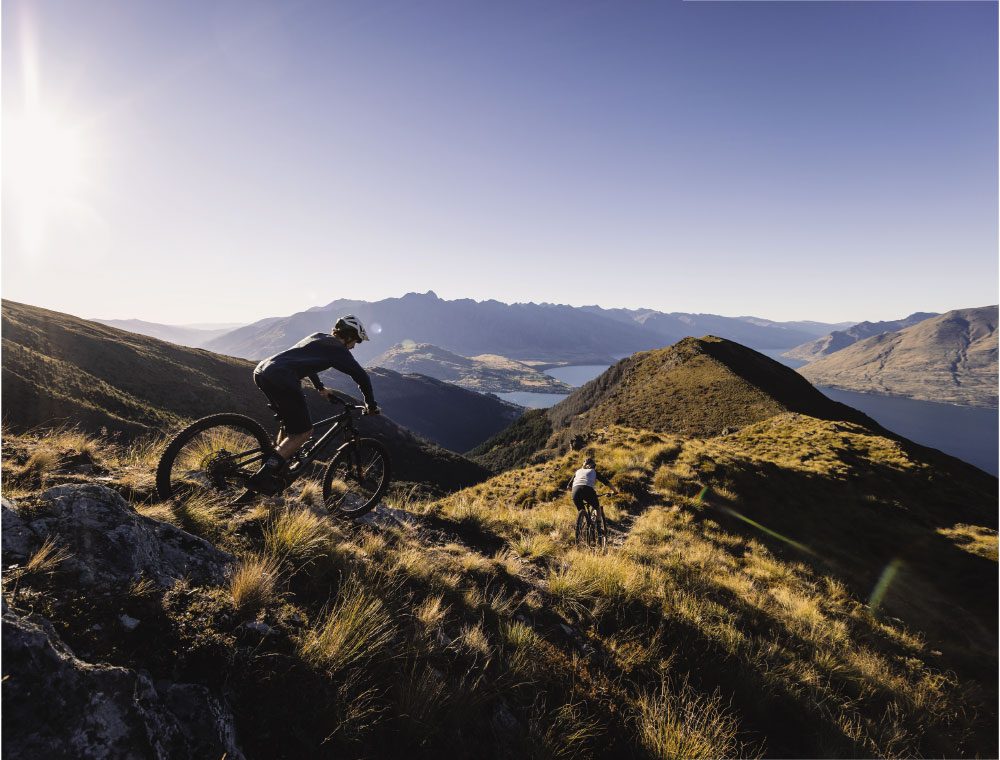
The network of trails that spans the basin is the artery that joins everything together all thanks to the Queenstown Trails Trusts. The QTT is responsible for the gravel trails that connect the Queenstown area together, giving access to different parts of the region without the need to ride on busy roads. The QMTBC and QTT work together to create a bigger, better network. Recent projects, like Bush Creek, a single track that has connected Coronet Peak to Arrowtown, has massively improved the famous ride, ‘Corotown’, by removing all the horrible river crossings. By using the QTT network and the QMTBC network, you can link up huge rides whilst mostly avoiding the roads. It’s flipping fantastic! And, if you’re not in the mood to ride mountain bikes but still want to get out and about, it’s easy to grab a gravel bike and smash out the k’s. With over 130km of gravel trails in the area, there is more than enough to keep you busy. For those who feel up to a big backcountry XC ride that feels kind of remote, I can’t go past recommending the Coronet XC loop that takes you around the back of Coronet Peak. These trails and networks are all possible due to the hard work QTT puts in. I’ve heard about the plans for the future and if they get the go-ahead, it’s going to make Queenstown an even more connected cycle network, which is a huge win in my books. With such a host of trails available on Queenstown’s doorstep, it’s easy to see why there are a bunch of locals doing so well on the world circuit in downhill, enduro and freeride events. The list of riders who now reside in the small alpine town during the summer months is pretty ridiculous: Eddie Masters, Matt Walker, Cole Locus, George Brannigan, Louise Ferguson, Vinny Armstrong, Jess Blewit and Robin Goomes, just to mention a few. In the lead-up to the World Cup, Enduro World Series, and Crankworx seasons, there is a whole host of teams and pros that come to town for testing and training. Line up at the Skyline Gondola in the latter half of the season and you will see everyone from Loïc Bruini to Emil Johansson lapping the park. And it’s not just the big names that are savage riders – there are so many low-key shredders in town. People that you have never even heard of, who can outride the best. There is something in the water here. People will come for a season and progress so much in that time. Being able to ride after work probably helps a lot – and I mean, literally from your office to the bike park, just two minutes out of town – but another big factor is being able to ride with people that are better than you. From trying to hold your mate’s wheel down a track while you chase him at a pace you don’t really want to ride at, to rolling up to Wynyard Bike Park for a jump session with your mates and getting spurred on by them making cool shapes while in the air — there is a culture of moving forward, of improving, taking inspiration from others, and applying it to your own riding. The progression levels of everyone seem to go up every year. It’s really a product of its own environment: with lots of variety of trails and long summer days giving you heaps of time to get out on the bike, the bike time just racks up. I will warn you though – don’t drop-in in front of the grommets, because they’ll be flying past you in no time, with more style than you could imagine. The next generation coming up are talented beyond what I can comprehend. They are so incredibly fast and stylish. It’s like they watch a YouTube video, and then just go do it — there’s no question about how they do it; they just do it. It’s so impressive and I think in the next few years we’ll see even more big names come out of this small town.
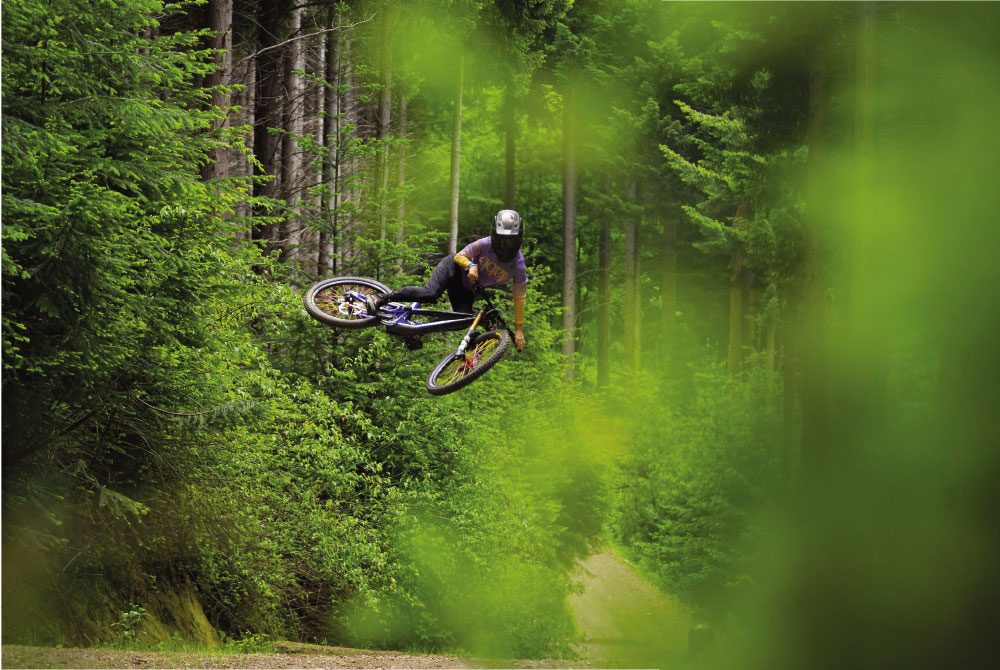
I think one of the reasons we have so many fast grommets in town is due to the Vertigo Summer Series race events. The main man behind this series is Paul Angus (a.k.a Pang), a legendary figure around Queenstown. Co-owner of Vertigo Bikes, and sometimes known as the ‘Huck Wizard’, Pang has seen and done it all in Queenstown. He lives and breathes the sport that we all love. As a former World Cup racer, he’s deadly fast on a bike, riding with pinpoint precision, and as stylish as they come, making him a great person to watch flow down the steep trails of Queenstown. His passion for downhill is prevalent from the moment you step foot into Vertigo Bikes. There’s a museum of old downhill bikes as you walk in the front door and dotted around the shop are old classic parts and frames. Pictures of the staff out shredding the local trails, cover the walls.
There’s a vibe you can feel as soon as you enter and you can sense the passion which is shared by everyone who works there. The smell of the workshop lingers in the air; that classic old bike shop smell, it’s fantastic. Vertigo has such a rich history in mountain biking in Queenstown, that it’s such a staple in the community. Throughout the summer, Pang, Jimi Ramsay (manager at Skyline MTB) and a few legends from Skyline run the Vertigo Summer Series in the Ben Lomond Trails. A grassroots race series that consists of four rounds, with the Whakatipu World Champs wrapping it up. Pang and Jimi pour their heart and soul into these well-organised races, which are a passion project of theirs, along with volunteers who donate their time on race day. It’s a hotly contested race series – everyone comes out to race their mates and settle the trash-talk that’s been going on all summer. The turnout is huge and normally you have to pre-register to enter. All the funds raised at the races go back to the Queenstown Mountain Bike Club.
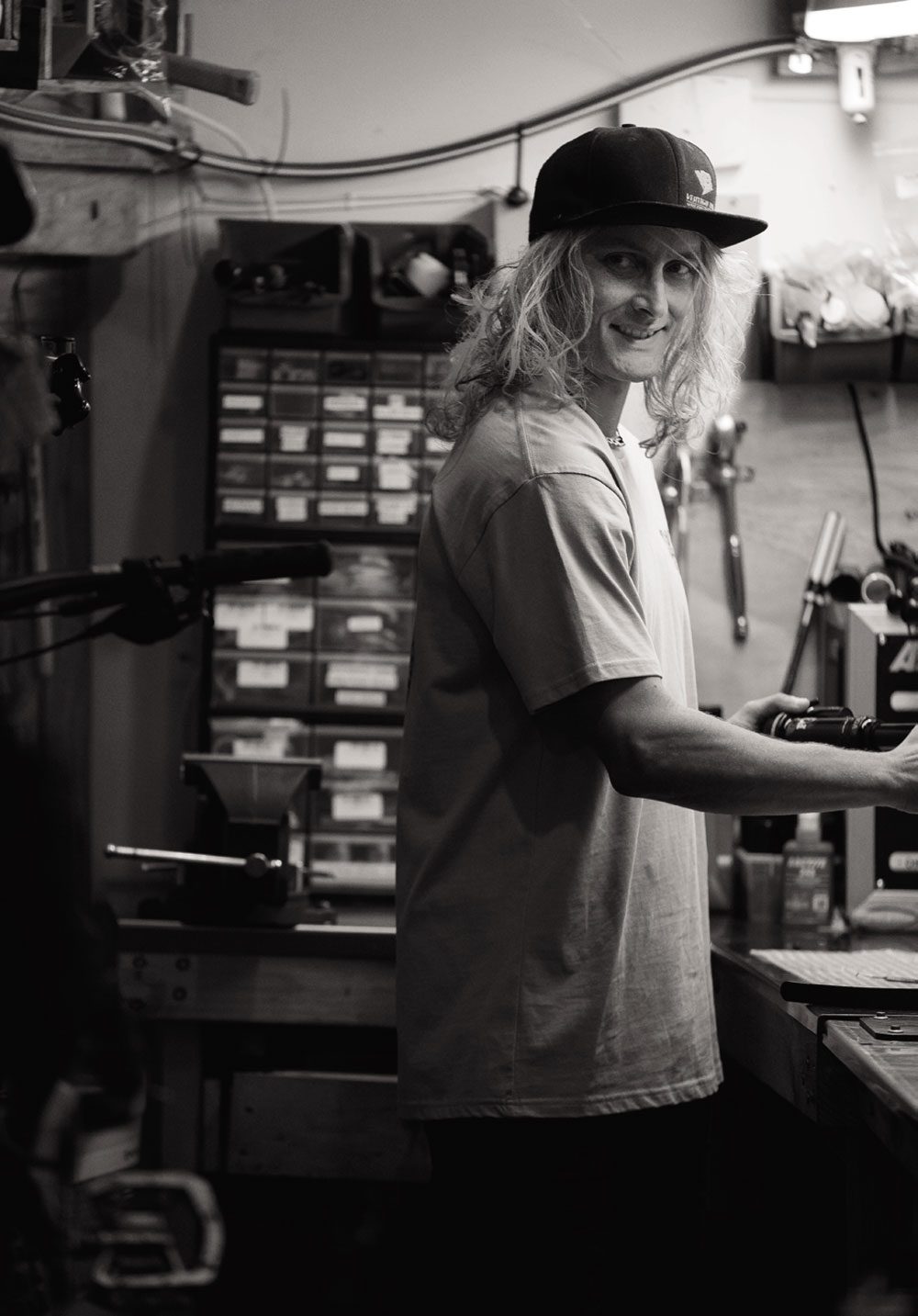
The groms make up a huge number of participants and their times are within seconds of the elites. Each race is on a different track and often have fresh bits of track dug in for the racing. The atmosphere at the side of the track is electric. They are awesome events to be involved with and it’s so cool to see all the young, up-and-coming riders get to race on the local trails.
If you want to see a representation of this local scene, there’s no better place to be than Atlas Beer Cafe on a summer’s evening. This tiny yet wholesome pub will be packed to the brim with locals after finishing their ride. There are bikes everywhere, parked up all over the place, and smiles and cheers getting thrown about left, right and centre. Big hearty pints are being poured from the range of 24 beer taps that consume the wall of the bar, and the warm, welcoming atmosphere sucks you in. Above the bar hangs Kelly McGarry’s bike that was famously flipped over the canyon gap at Red Bull Rampage. Other bike memorabilia is scattered around the place, and the friendly staff always want to know about your ride as they pour you a beverage to quench your thirst. If you’re a local and you come to Atlas on a Friday evening, you will be sure to bump into someone you know. You don’t need to plan your evening, as it’s one of the best places be post-ride. It’s a common place us riders like to descend on to catch up with each other after the week’s events and plan the weekend’s adventures. There are two reasons why everyone comes here though; 1) the fact it’s just a fantastic little bar that has a vibe that is second-to-none; and 2) Atlas give so much back to the mountain bike community. Atlas’s owner, Davey Mackenzie, and all the staff put so much effort into helping the Queenstown Mountain Bike Club, from organising and running fundraisers – like the SOS (Season of Shred) Party at the start of summer as well as the end-of-season wrap-up party – to sponsoring trails and the club’s trailer. The staff outdo themselves every year by putting so much effort into these great events that see a huge turnout – they are always a night to remember.
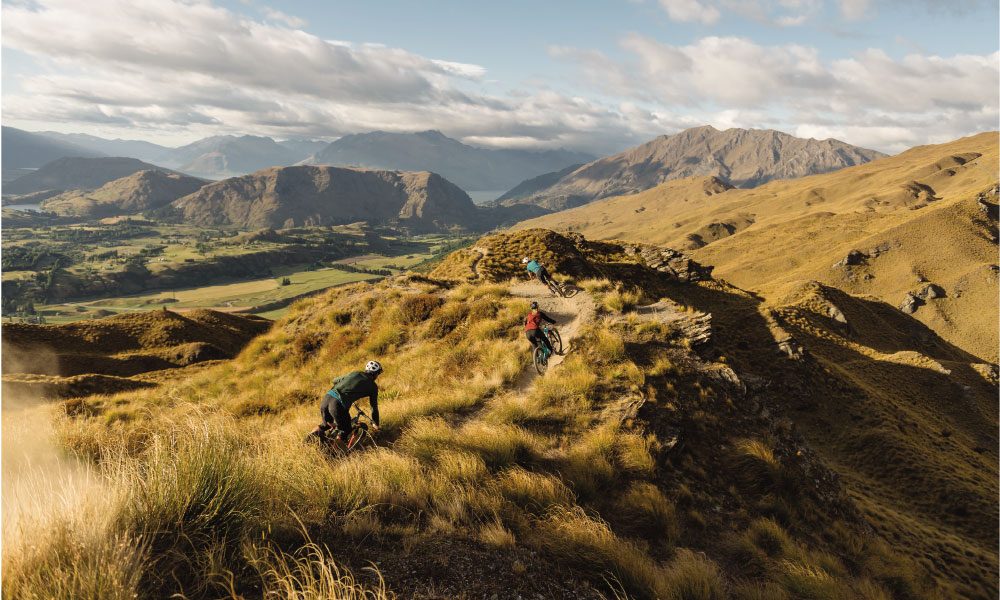
Personally, it’s not Queenstown that makes Queenstown such a special place to be. Yes, I’ll say it again, the riding is pretty extraordinary, the landscape is breathtaking and having three lift-accessed parks in close proximity really does add to the appeal. But that’s all just a bonus. What really makes this place oh-so-special? It’s the people who live here. They really make this place what it is. I’ve never lived in a place where the community feel is so prevalent – it’s more like a big family.
I’m so glad I saw that photo and it changed the trajectory of my life so many years ago. I’m happy I made the leap of faith by moving about as far away from home as possible. After a few years of living here, Queenstown is my home. When I head away on holiday, instead of dreading coming home, I find myself looking forward to being back. The breathtaking landscape, vibrant energy and unbelievably good trails on its doorstep, really make this a special place. You soon realize, it’s the people that make Queenstown, Dreamstown.
A little slice of paradise.

Trail Builder: The Gift That Keeps Giving
Words: Meagan Robertson
Photography: Specialized
Thanks to its Soil Searching initiative — created to recognise, celebrate and support trail builders — Specialized has helped enable future trail building efforts through one local legend and a generous Trail Fund donation.
Talk about making the most of winter — while some hung up their bikes to avoid battering sloppy trails, and others jetted off for an overdue overseas trip, Specialized set its sights on finding and rewarding the nation’s top trail builder with a limited edition Soil Searching Specialized Levo, then auctioning off a second and donating all the proceeds — an incredible $17, 850! — to Trail Fund NZ.
BUILT FOR TRAIL BUILDERS
Designed for trail building, and to reward trail builders, the Mountain Guardian is one of 50 Soil Searching Specialized Levos produced worldwide. Featuring the Specialized Soil Searching logo to reiterate the importance of trail building while following sustainable building practices, the custom made eBike boasts Soil Searching Paint, RockShox Zeb Select + Fork, RockShox Super Deluxe Select + Shock, SRAM XO1 Groupset, Code RS Brakes, Soil Searching Tyres, Roval Traverse Alloy Wheels and TCU2 Display.
In mid-July, Specialized put the call out to ensure one of the two Mountain Guardians in New Zealand landed in the hands of New Zealand’s best trail builder. In a country known for its incredibly high number of volunteers, the nominations came in hard and fast, with more than 100 committed and talented trail builders in the running.
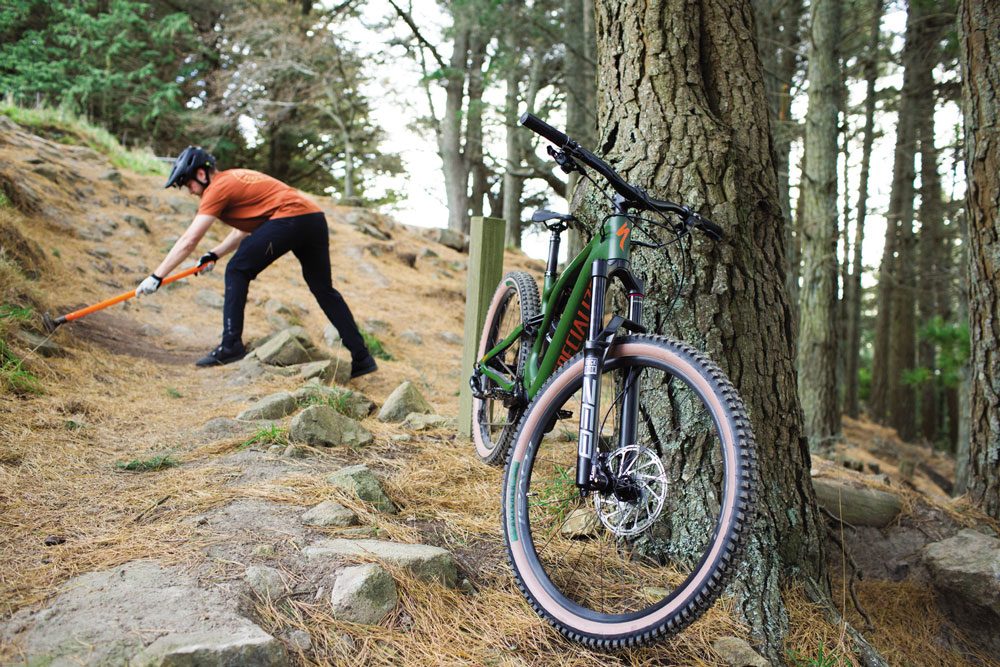
THE REAL DEAL
With only one Mountain Guardian to give, Specialized NZ reviewed every application and, according to Specialized’s Marketing and Events Coordinator, Ben Crowley, choosing the winner was no easy task.
“Trail builders are the unsung heroes of mountain biking, and we are committed to changing that by recognising, celebrating, and supporting the trail builders who help shape our sport and our stoke,” explained Ben.
“That said, there are a lot of them, and so many are volunteering in a way that is truly outstanding that it made the choice incredible difficult. In the end, we decided on a guy that sums up what Soil Searching is all about — Marty Richards.”
A key part of the Cable Bay Adventure Park trail crew based in Nelson, Marty is a trail builder that leads by example.
“Marty is a serial volunteer whose contributions to various projects have improved the trail offerings for all in Nelson and, over the past three years, he has had direct involvement with all of the 18 trails built at Cable Bay,” says Richard Ussher.
“Marty is super approachable and always willing to help or give advice to new trail builders. He never asks for anything, or expects anything in return, and truly does it for the love of mountain biking. He has inspired and imparted a lot of knowledge to a wide group of people, which has helped grow the competence of trail builders in the region.
“Probably the biggest influence he has had is with the ‘Sunday School’ team. This is a group of teenagers from a variety of backgrounds who come out to the Adventure Park to regularly dig and maintain trails with Marty. Nicknamed ‘Dad’ in the group chat due to his mentoring, Marty organises transportation, oversees the trail building and drives shuttles for them afterwards.
“The Sunday School crew often do some of the toughest yards on the sections that others shy away from, and it is easy to see the positive influence impact he has had on them.”
Richard says Marty is so committed to ensuring the best experience for Cable Bay riders that he has — largely by himself — built a 1km walking track for the sole purpose of getting walkers and other non-mountain bike users off the main exit trail at the park.
“It is hard to overstate what a positive member of the mountain bike community he is. He is never looking for recognition and just gets on and does what he loves — digging and riding. The region would undoubtably be significantly poorer without his massive efforts.”
Marty was absolutely thrilled to receive the Mountain Guardian and is already putting it to good use!
“I feel so privileged to know such an awesome group of people and so humbled from the support I’ve received from the Nelson MTB community and Cable Bay Trail Crew,” said Marty.
“It’s been quite overwhelming. I think I’ll go hide in the bush for a bit… and go dig a track.”

Marty Richards.
PAYING IT FORWARD
With one Mountain Guardian out the door, Specialized looked to further support trail building through a different channel — Trail Fund NZ.
“We created Specialized Soil Searching to fuel and support the energy and passion of the trail building community,” says Ben. “So, we thought, what better way to do that than fundraise for an organisation that is already doing that on a regular basis?”
Founded in 2012, Trail Fund NZ is a not-for-profit organisation, run solely by volunteers, supporting the development and maintenance of publicly available, environmentally sensitive and sustainable mountain bike-accessible trails in New Zealand. It is also committed to providing funding for — and education on — trail building, as well as advocating on behalf of mountain bikers to Government.
Since its inception, Trail Fund has distributed more than 150 grants — totaling more than $400,000 — to a wide variety of mountain bike trails. From Thames to Taupo to Wanaka to Bluff, from Grade 5 singletrack to skills parks, Trail Fund has tried to cater for riders of all abilities around the country.
And now, thanks to Specialized donating the proceeds of the second Mountain Guardian to Trail Fund NZ, the organisation can provide even more grants than normal in the coming months.
“We are so thrilled to be able to pass on the money raised by Specialized to trail building groups around the country using our well-established funding process,” says Trail Fund president, Hasely Lobb.
“This is the most substantial donation we have received to date and it’s great to see bike brands investing in the trails their customers love to ride.”
Thanks to the donation, Trail Fund’s next funding round is our biggest in many years, with four grants of up to $4,000 available. The deadline is 1 December. For more details, see the ‘Get Funded’ section on trailfund.org.nz
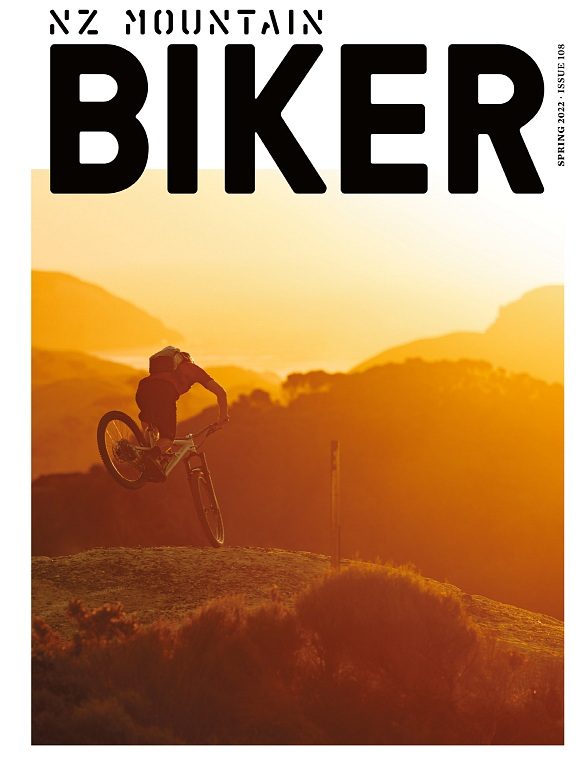
The kitchen: Rice Cakes
Words: Liam Friary
Yes, these are rice cakes. They are a super simple staple that will keep you fuelled during long days on the bike. Bonus — they are easily made ahead and carried on a ride. This recipe is just a starting point; depending on preferences, what foods are in season and what’s available in your pantry, additions can be made. Add anything from maple and bacon to blueberries and chunks of dark chocolate. Get creative with what you like and what you have on hand, wherever it is you’re cooking and riding.
Ingredients –
4 cups tap water
2 ¼ cups white short grain rice
2 ½ cups full fat cream cheese
2 Tablespoons granulated white sugar
2 Tablespoons melted coconut oil
1 teaspoon vanilla extract

Method –
- In a rice cooker, combine your water, rice, sugar, and coconut oil. Turn it on (white rice setting, if your rice cooker specifies) and let cook. Once cooked, mix cream cheese and vanilla into rice. Note: this is also the time to throw in any spices, fruit, chocolate, nuts, etc that you’d like to add to your rice cake.
- Spoon into a large zip-closure freezer bag. Flatten, smooth the air out and leave to cool on a flat tray. Once cool, transfer to the refrigerator to chill overnight. In the morning, slide your tasty slab of rice onto a cutting board. Cut into approximately 20 squares. You can either keep them all together in an airtight container, or individually wrap them in foil. Either way, they should be stored in the fridge until needed. Refrigerated, they will keep for about four days.

Musings Issue 108
Words and illustration by Gaz Sullivan
“Leaving the power setting on high makes me feel both good and bad at the same time.”
Elsewhere in this very magazine, I wrote a piece about my time aboard the Trek EXe, my first extended period atop an electric-assist machine. I finished by saying: “when I get one”.
Going trail riding on the e-bike is ridiculous fun. The e-assist provides the buzz of riding a mountain bike fast, almost anywhere. The speed available on a flattish trail makes the chore of climbing to the top of a downhill run almost unnecessary. And of course, if you do want a downhill run or three, they are easier to get to.
Surely that is what we look for when we go mountain biking?
It is hard to express exactly why we ride. Sometimes it is for that endorphin payoff available when a difficult task is performed as well as we can do it. Everybody has their own little envelope of bike riding ability and being out there in the woods doing your best is part of why we go out. The desire to do that more often, to make more of your bike time inhabiting that zone, is what has driven the whole phenomenon of shuttling, and for that matter, adding electricity.

A pile of watts that can’t be delivered personally gets us more of that sweet spot we look for.
Well, maybe.
Meanwhile, the Luddite in me has been quietly niggling away in the back of my mind.
I really like the simplicity of basic bikes. I like steel frames, five of the six rideable bikes in my stable are ferrous. I like bikes I can work on myself, which means they have to be simple. I can dismantle and reassemble any of my steel bikes without needing assistance or therapy afterwards.
My carbon, fully-suspended mountain bike with hydraulic brakes and tubeless tyres is bristling with things I don’t feel qualified to mess around with. Yes, I know, these are personal shortcomings I could address, but adding electronics, several batteries and a motor won’t help.
I like going out on my bike with no fixed plan, and riding until I can’t. Having a digital readout on the top tube telling me how much range I have left is a different experience. After a dozen rides I have figured out how much of the battery is required to get me up various hills, in various power modes. Because I know my patch pretty well, I can wring the thing dry most rides. I took great pleasure in arriving home with the readout showing less than ten percent. Several times it was two, and on one occasion, one. How that would work out in unknown territory is something I have yet to experience.
Part of bike riding is also sort of masochistic. People say that getting fitter doesn’t make things easier, just faster. I like to feel how I feel… hard to explain to the outsider but getting to a particular part of a certain ride and feeling slightly less discomfort than the previous episode in that place is a good thing. Adding an external power source doesn’t remove that possibility, but it makes it harder to judge.
Maybe that is the niggling thought I have. When I am on the E, hooning up the climbing section of the jungle trail that is my favourite five kilometres in our local patch, the most accurate description of what I am feeling is probably guilt.
Like, this should be harder. I can make it harder, by buttoning down the power. But I don’t, because the power is what makes this section with the diagonal roots across the trail so much fun.
And leaving the power setting on high makes me feel both good and bad at the same time.

Beer Guide Issue 108
‘No alcohol’ is the boom category at the moment, and New Zealand craft breweries make some of the best non-alcoholic beverages in the world.
You’re reading a mountain biking magazine. You love being fit and getting the most out of your body and being in the outdoors.
That makes you a target audience for “lifestyle” beers — which means low and no alcohol, low carb and gluten-free options.
These are sometimes called “better for you” options. And the good news is that “better for you” also means better tasting these days.
Let’s go through some recommendations in all these categories.
THE HEROES OF ZEROES
‘No alcohol’ is the boom category at the moment. I can put my hand on my heart and tell you that New Zealand craft breweries make some of the best non-alcoholic beverages in the world. Believe me, I’ve tried everything on offer.
It’s fair to say imported beers never taste as good as they would if you bought them in the country of origin. “Beer should be drunk in the shadow of the brewery”, is a phrase that still holds true because travel of any kind takes the edge off even the best beer. That’s even more so for non-alcoholic beverages because alcohol is a preservative and therefore, a zero-alcohol beer is not going to travel anywhere near as well as something with alcohol in it, so I’d avoid imported beers in this category.
It’s worth nothing that the legal definition on non-alcoholic in New Zealand is less than 1.15 per cent ABV, which seems high by world standards. While that’s the legal benchmark, most breweries work to the accepted guideline of less than 0.5 per cent ABV.
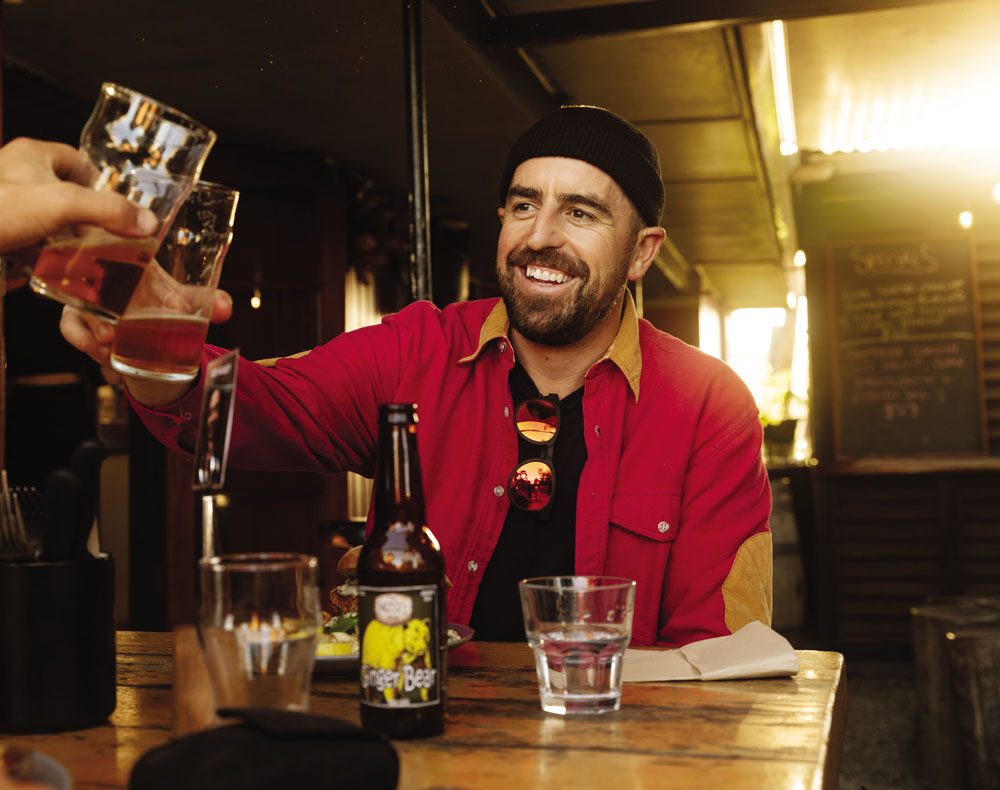
Bach All Day Hazy IPA
Bach created the breakthrough non-alc craft beer with their All Day IPA and this hazy version is a step up from that. Stick with the original if you like clear beer, but this hazy has heaps more flavour.
Garage Project Tiny
Almost a cult beer now because it’s from Garage Project. Lightly lemony hoppy.
Brothers Beer Fill Yer Boots
Another hazy (and as a rule hazies work really well in this category because of the fatter mouthfeel). This has a nice tang of grassy bitterness.
Good George Virtual Reality
A superb offering from Good George. Up there with Garage Project and Bach.
Sawmill Bare Beer
The one non-alc pale ale in this line-up and the only one in a bottle. This has a bite more bitterness than the hazies.
LOW CARB ULTRA TRENDY
While non-alcoholic beers are trending, there’s nothing growing as fast as low-carb beers.
There are many reasons to choose a low carb beer — it could be that you’re on a ketogenic diet, or just trying to reduce the carbohydrate you consume. Or it could be for more important reasons, such as having Type 1 diabetes.
Beers labelled “low carb” have been tested and should come with nutritional panel telling you how many carbs per 100ml they contain. A good guideline is that a low carb beer should have 1-2g of carbohydrate per 100ml.
It’s important to note that low carb does not equal low calorie, though in the case of the beers listed here, some are definitely lower in calories as well. A beer’s ABV (alcohol by volume) will play a big part in the total calories as alcohol sits somewhere between carbohydrate and fat in its calorie density. So, if cutting calories is your thing, do check the labels.
The best thing about modern low carb beers is that they are super- flavoursome. Brewers use a special enzyme, naturally found in malt, to help ferment out any residual sugars.
That has a number of effects on the beer. First, the lack of residual sugar means the beer doesn’t feel as heavy in your mouth. In fact, low carb beers are often very light-bodied and quaffable. Second, low carb beers finish very dry compared with normal beers, which many drinkers prefer anyway.
Low carb pale ales and IPAs are a great place to start if you’re after flavoursome low carb beers. That because the extra hop additions add both mouthfeel, through hop oils, and added flavour. Plus fruity varieties of hops can add a perception of sweetness that covers up the lack of sugar.
Epic Blue Pale Ale
4.8%, Carbs 1g/100ml As you’d expect from Epic, it has great hop flavour — juicy and citrusy — that’s well integrated into the light body. It’s so good for a low carb beer that it made it into the New World Beer & Cider Awards Top-30 on its merits as a pale ale, that’s how tasty it is.
Deep Creek LoCal IPA
3.5% ABV, Carbs 2g/100ml A super low ABV beer compared to others in the range, but you’d struggle to pick it. Brilliantly executed in terms of balance and flavour. A gold medal winner at the 2022 Australian International Beer Awards. Very low calorie count to boot.
Urbanaut Miami Brut Lager
5%, Carbs 1.5g/100ml Packed to the seams with sweet passionfruit and lime hop flavours. A sparkling carbonation and punchy hops on a light and airy body. You won’t pick it as low carb. Urbanaut’s Copacabana IPA is also officially low carb now and is one of the best beers on the market, full-stop.
Emerson’s Super Quench
Pacific Pilsner 4%, Carbs 1.9g/100ml Super pretty beer to look at and, frankly, delicious. Hoppy, refreshing and spritzy light without any soda water notes.
Bach Brut Ultra IPA
4.4%, Carbs 1.7g/100ml Super-fruity with aroma and hop flavour rolling out of the glass thanks to a massive dry-hop bill that features all your favourites: Citra, Mosaic, Riwaka, and Rakau.
LIGHT BEERS ON THE RISE
We don’t use the term “light” the way Americans do to reference their very pale lagers. Here, light means low alcohol — generally regarded as anything below 2.5 percent.
The range of beers in this category is more expansive than in the zero and low carb range, as that little bit of ABV helps create a canvas for flavour.
North End Petit Luna
A clever little beer. Hibiscus brings some fruity character and a lovely pink colour. Kaffir lime coupled with spicy Belgian yeast does some heavy lifting when it comes to flavour. Slightly tart and spritzy.
Sunshine Light Pilsner
Smells like the real deal and tastes great too. The body, naturally, is a little shallow, but shallow can be good: like standing knee deep in the ocean and having the waves splash around your legs. A hoppy aftertaste, with a broad bitterness.
Croucher Low Rider Small IPA
Probably New Zealand’s most celebrated low-alcohol beer. In many ways, it’s almost become the flagship beer for Rotorua’s Croucher Brewing — a remarkable feat for such a low ABV product. It’s changed and evolved over the years into an almost perfect distillation of all the best aromas and flavours of an IPA.
Townshend Half Mast
Typically, of Townshend beers, this is all about balance and the fruity expressive hops are perfectly restrained to match the 2.2 percent base. A wee gem.
8 Wired Lo-Fi
This hoppy sour is sharp as a tack with pinging citrus and light acidity it packs way more flavour that should be feasible at 2 percent ABV.
GLUTEN FREE
It used to be that gluten free was a dirty word in beer (in short they tasted foul) but Upper Hutt’s Kereru Brewing have changed the game dramatically. They are unrivalled when it comes to gluten free beer.
Their Hazee, a gluten-free hazy pale ale, has to be tried to be believed. It’s as good as a normal hazy pale and you don’t even notice the gluten-free aspect. They have a standard gluten-free APA, nice and hoppy, and a clever raspberry-infused version of their original Auro, a golden ale. And they’ve just released a gluten-free Mocha Porter. You can order a mixed box of the gluten-free beers from their website.
Words: Michael Donaldson
Photography: Henry Jaine.
Product Review: Rapha Trail Shorts
“Every piece of clothing comes with a field repair kit containing fabric matching iron-on patches to keep you looking good after a crash.”
It’s no secret that this brand comes from the ‘roadie’ scene. But this means they know a thing or two about use of good fabrics and have been making ‘roadies’ look good for years. Rapha has now employed their knowledge around textiles to mountain bike apparel. Their focuses are on sustainability and longevity — and I can vouch for their products lasting many seasons. Rapha’s colourways are normally subtle, so you needn’t worry about being out of vogue whilst on the trail.
The Trail Short is a built from four-way stretch material that is Bluesign certified, meaning it is built from sustainable sources with minimised environmental impact. An integrated, contoured waistband allows for precise fit adjustment and there are four pockets, two of which have zippers with an integrated phone sleeve to keep items from sliding around. The cut is fairly form fitting but has been designed to work with or without knee pads.
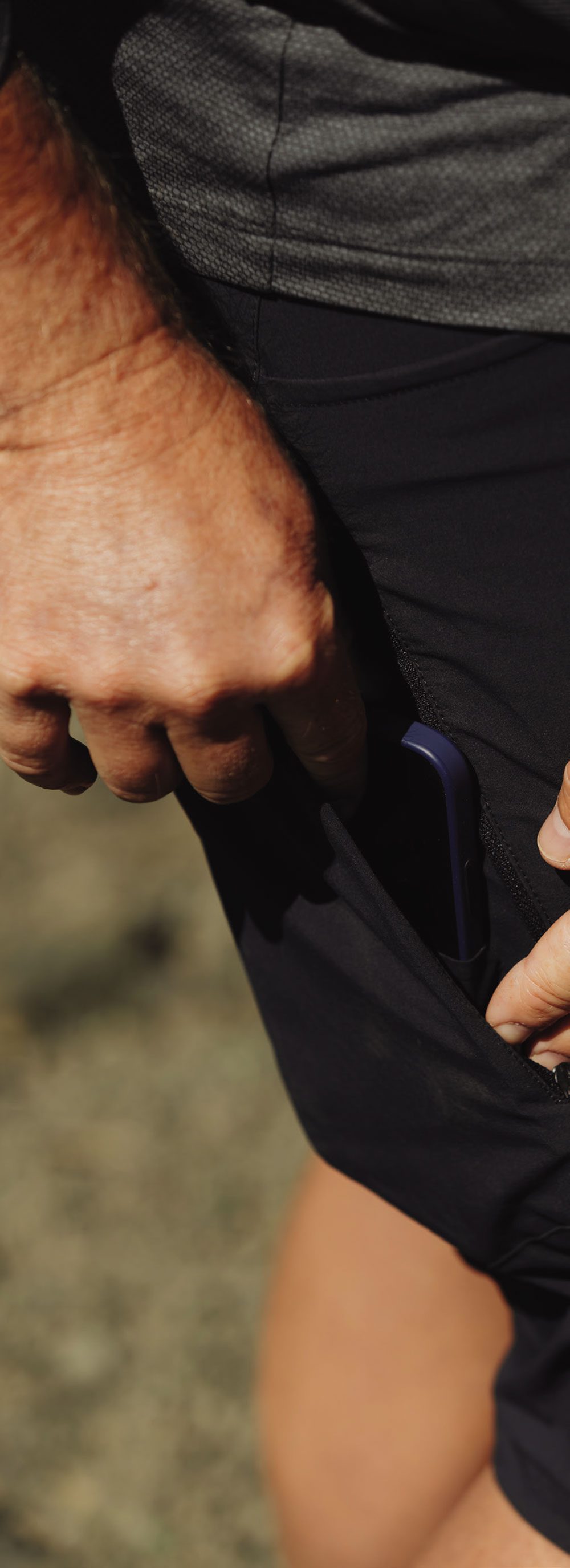
The Trail Short have a relaxed and comfortable fit that slides over small to medium knee pads with no issues. Larger, downhill style knee pads may cause the shorts to bunch up and sit on top of the pad, though. I found they fitted my medium knee pads well and were also good without, too. The short is a little more form cut, which means there’s no bunching and they don’t get in the way when you’re pedalling. They certainly don’t have the bagginess of other shorts on the market.
The adjustable waist is neat and easy to use, locking in a personalised fit with no slipping of the belt. The size medium was a perfect fit in both the waist and length for me. Having had these shorts for a while, I found the breathability to be moderate even in the warmer months. They breathe well and don’t overheat, but a few vents would just allow a bit more airflow, especially if you’re wearing a bib-short underneath. The zippered pockets keep trail essentials secure, and the phone sleeve is a very well thought out solution to keep your phone from bouncing around. I really like this feature, and the position means the phone feels like it’s out of the way but always accessible for that quick pic or vid.
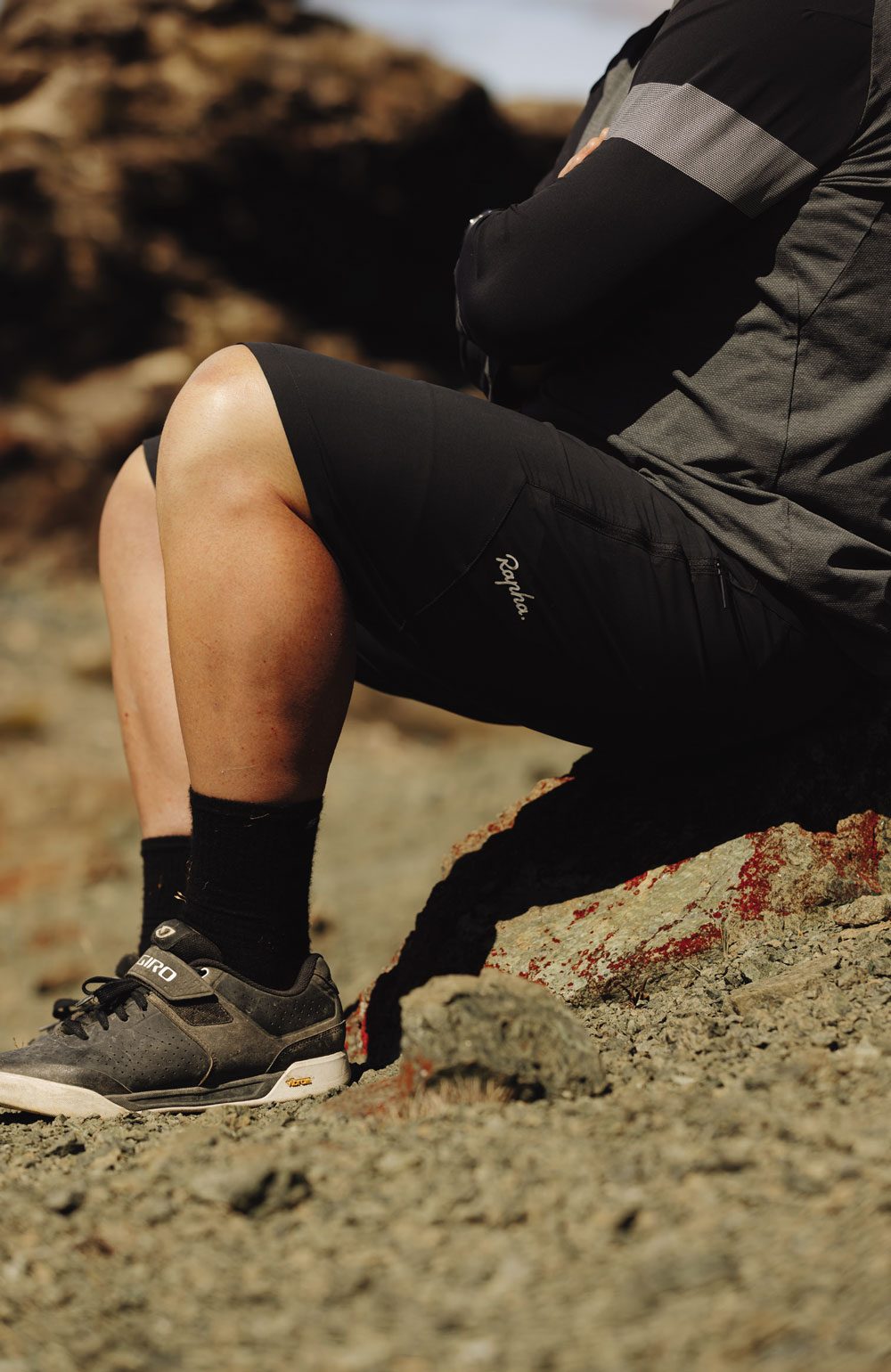
Rapha has priced these shorts consistently with the market and offers several services, such as free repairs and free returns if you’re not happy with them. Every piece of clothing comes with a field repair kit containing fabric matching iron-on patches to keep you looking good after a crash. Heck, if you shed some kilos they will offer 50% off your jersey in a smaller size. I’m a big fan of buying a quality piece once, rather than buying cheap stuff every year — and Rapha promises exactly that: quality and longevity, with repairs if you do happen to find a way to destroy it.
REVIEW: LIAM FRIARY
DISTRIBUTOR: IRIDE / RAPHA
RRP: $195 AUD
nar dapibus leo.
First Impressions: RockShox Pike
“We have been lucky enough to get our hands on the brand spanking 140mm Pike Ultimate and will be putting it through its paces throughout the year.”
Earlier this year, RockShox rolled out a major update of their range with an all-new Zeb, Lyrik and Pike, not to mention a bevy of new rear shocks. We have been lucky enough to get our hands on the brand spanking 140mm Pike Ultimate and will be putting it through its paces throughout the year. First though, the Pike was already a fantastic fork, so what have the SRAM engineers been tinkering with to make it even better?
For starters, one look at it and you can tell this is more than just tinkering, this is an all-new fork. The chassis and arch, in particular, look markedly different to earlier models, but the changes are worked throughout; starting from a blank canvas has meant that engineers have been able to make a unified approach to integrating all the best new ideas they had at one time. On the outside, you’ll see a new crown, upper tubes and lower legs and pressure relief valves on the rear, but the insides are all new too.

Previous Pikes spanned a wide travel range, but this has now been narrowed down to focus specifically on the 120-140mm travel range —smack bang in the middle of what SRAM see as the trail bike market. If you want more travel, you’ll have to go for the Lyrik; less travel, you’ll be on the Sid. This tighter range of travel means that SRAM engineers have been able to narrow the parameters of what they are working with and therefore optimise around that. The result, lower weight in some areas, and better torsional rigidity, meaning they are less likely to twist under braking load and navigating off camber terrain. Forks that don’t twist are free to move through their travel, so that rigidity creates a consistent, supple fork, even under the toughest conditions.
The new Charger 3 damper has been designed from the ground up and features a new spring backed, IFP cartridge damper. Fully sealed and self-contained, this new damper is designed to offer riders a much more consistent feel throughout the stroke, and an increased ability for riders to easily tune the ride to suit their riding style and preferences. The result? Totally independent High-Speed Compression (HSC) and Low Speed Compression (LSC) adjustments, and no “cross-talk” between the two.
On top, you’ll find new adjusters with a new twin dial layout, also with handy visual indicators so you can see at a glance where you are on the adjustment scale. They feature noticeably clearer indents between each setting too. Inside the forks, the bushing design is brand new too — these feature longer bushings now, which actually reduce the overall friction in the system.
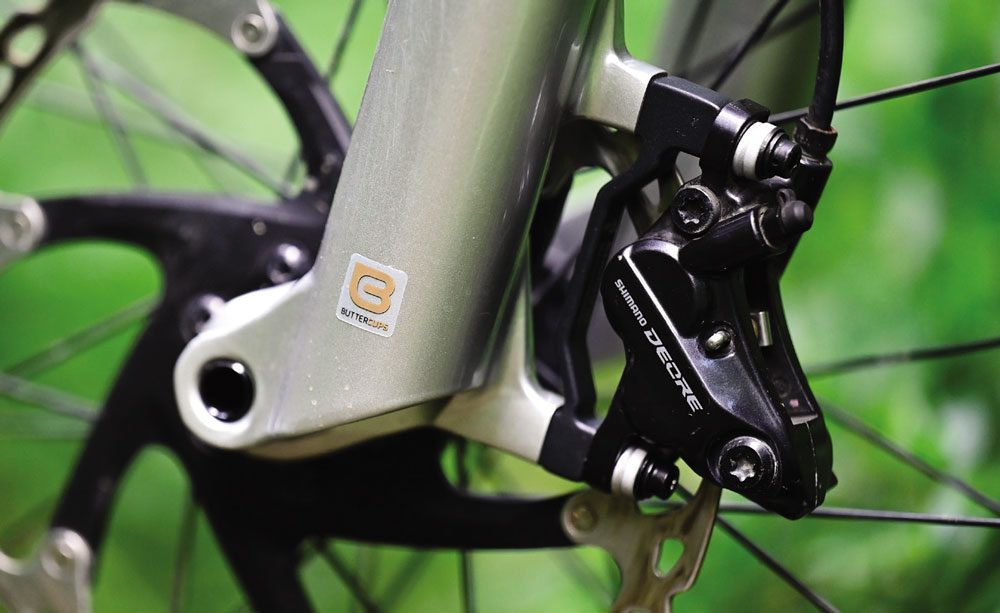
On the other side is the new Debonair+ air spring, again, tailored to the specific needs of a fork in the 120-140mm range. The shaft is now an all-aluminum piston instead of plastic, there are improved glide rings, and a tweaking of the volume in the positive and negative air chambers. So, what’s the end result of all of this? RockShox believe the new Pike can initiate travel easier and that it will feel plusher off-the-top, while still having great mid-stroke support. It also means a higher ride height; it won’t dive through its travel under braking which means that you’ll be able to utilise every millimeter of travel when things start to get rowdy.
In terms of weight, ours weighed in at 1.90 kg with a 190mm steerer. That’s comparable with the previous generation, but the fact that they have managed to get 13.5% more torsional stiffness inside the same overall weight is pretty cool.
The final new idea that engineers worked in was the addition of what they call Buttercups. What are Buttercups, you say? Well, first, let’s talk about what they are trying to address. Ever felt like your hands have been battered after buzzing through a section of ripples on a fire road? Those are high-frequency, low amplitude vibrations. RockShox call it ‘trail chatter’ — those fast, small vibrations that ‘vibrate your eyeballs’ so to speak. As fancy as they are, fork dampers aren’t really designed with this specific example in mind; dampers are designed to absorb impacts, vibration-like trail chatter can often make its way past the damper without really activating it, up the fork, and into your hands.” Ok, so that’s what they are working to resolve — but what exactly are they? Buttercups live on both the damper and air spring shafts of Ultimate-level forks. Inside their gold packaging, Buttercups utilize rubber pucks and a metal plate to absorb frequencies that would otherwise travel up to the rider. These little Buttercups add about 4mm of vertical compliance to your suspension and RockShox believe they achieve an average of 20% reduction in vibrations from reaching your hands. Impressive!
Having owned the previous Pike, and a Fox Factory 34 (albeit the previous generation), I was eager to see just how the new Pike had improved over its previous version, and also over its nearest competition that had recently been upgraded.
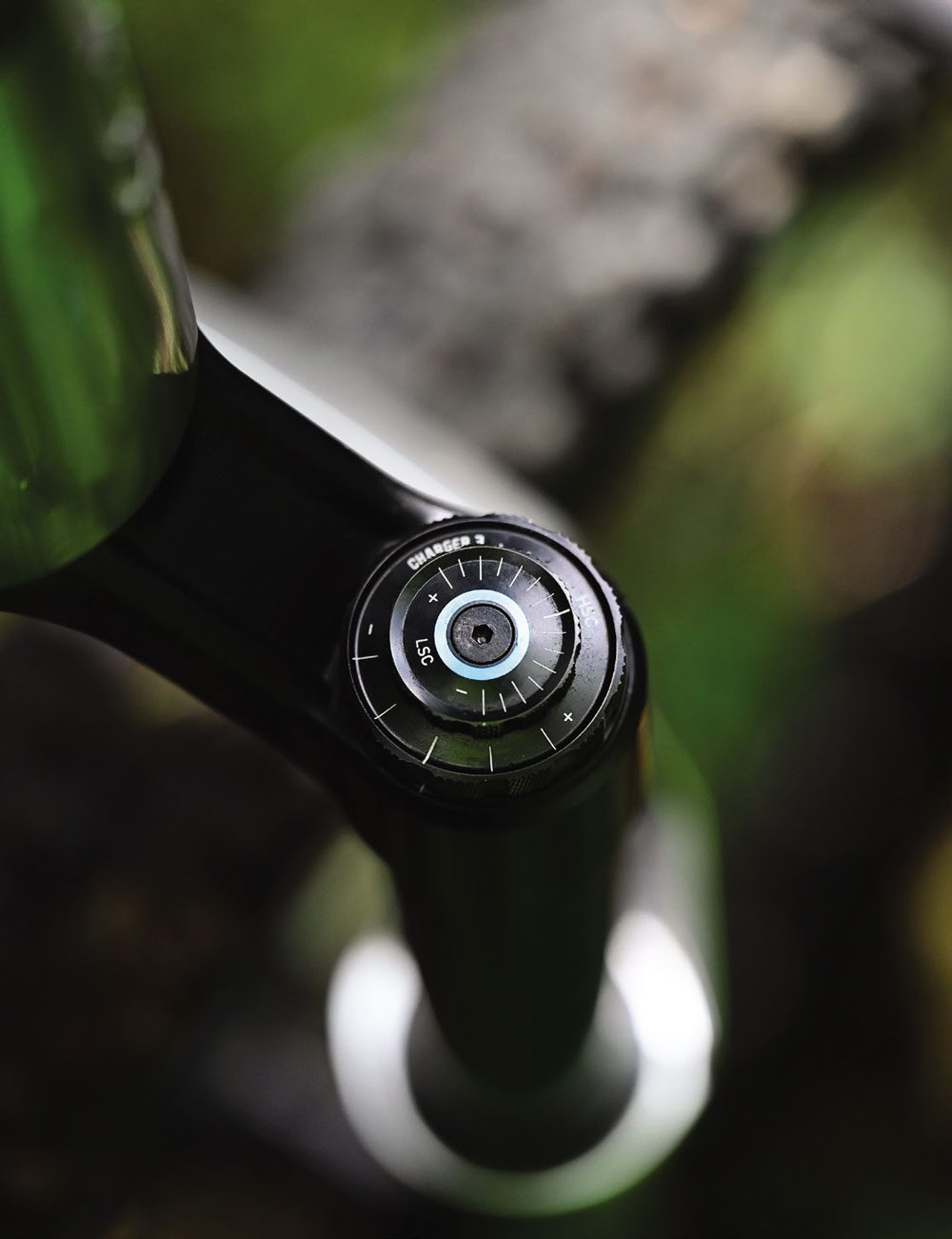
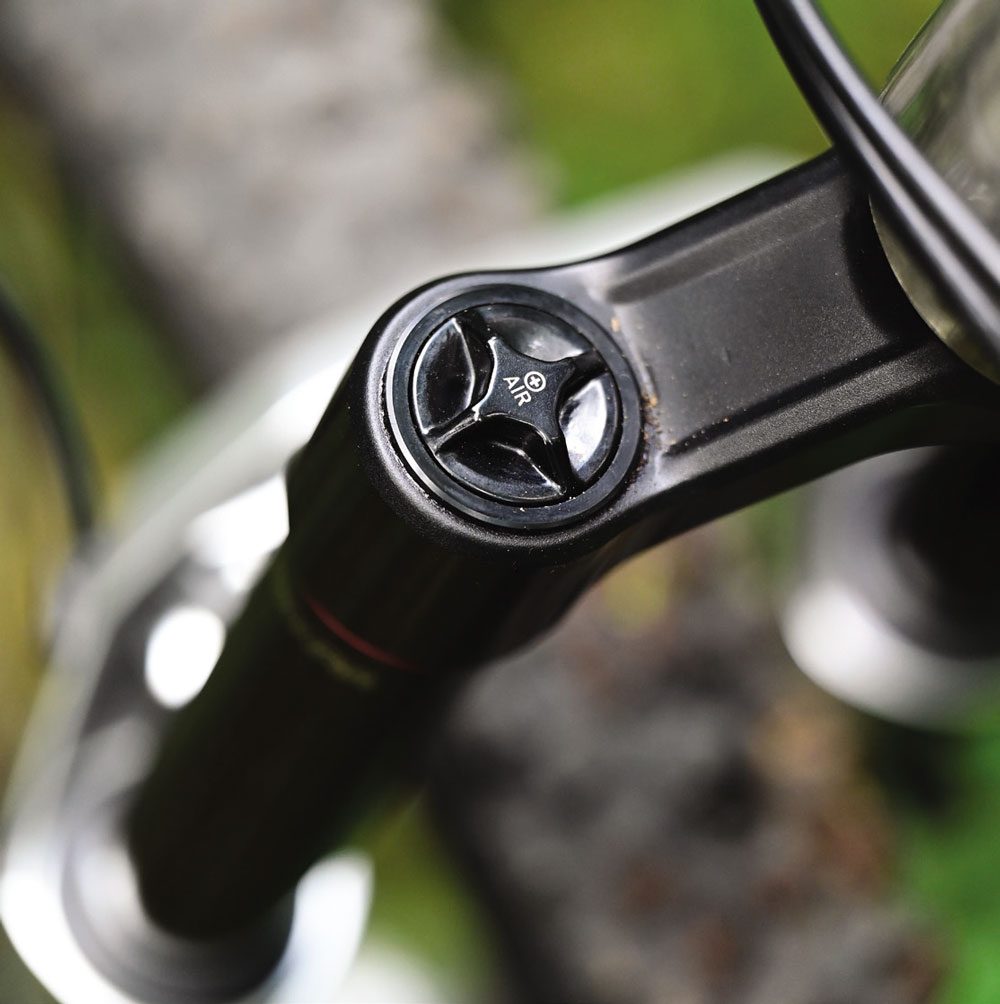
Setting it up on my Banshee Phantom down-country bike, I was immediately impressed with the new look. The whole chassis has a modern, muscular look about it… and the silver was a great match too, which didn’t hurt. Straight away, I could tell that these were going to be a vast improvement over my previous Pikes in terms of small bump absorption — these things were smooth and would initiate into their travel with almost no force. The amount of stiction that is needed to be overcome to get the stanchions moving was almost non-existent. The first trail I rode, I could tell that these were indeed a whole new kettle of fish compared to the previous version.
The biggest realisation was how the first 30-40mm of travel seems to be noticeably more active. Whereas I was previously reasonably happy with my old Pikes (yes, regularly serviced) these new ones made the old ones feel, well… let’s just say, they’re not around anymore. Fast forward a few rides and the next thing I started to notice was how much more regularly I was using all the travel. I’d look down at the travel indicator O-ring and see that I had used all the travel, however, while riding I never noticed feeling like I’d bottomed out. They seem to have also improved the feel of the curve as you move towards the end of the travel to make it feel like you never really hit bottom.
This is just a ‘first impressions’ review but we are looking forward to putting some serious miles on these throughout summer and seeing how they hold up over the long haul, as we test them through a variety of conditions and have time to fully experiment with the various tuning options on offer.
REVIEW: LANCE PILBROW
DISTRIBUTOR: WORRALLS
Product Review: G-Form Protection
“I’m really not sure if you could make a knee pad comfier than these. I actually forgot I had them on while writing this review…”
G-Form has built a solid reputation for comfortable protection over the years. I’ve owned previous versions of their elbow and knee pads, and I’ve used them for enduro racing when I’ve specifically been looking for something that is minimal enough to pedal in it all day, but enough to take the worst out of any impact. The last set of G-Form pads worked just perfectly at this, but they were on the minimal side of protection, so I was interested to see their latest ‘Pro Rugged’ series release as it seems to take things up just a notch. All of the new Pro Rugged range use their Smart Flex product on the impact zones; a soft, slightly putty-ish-feeling pad that gets significantly harder on impact. The technical term is ‘viscoelastic’; it’s a cool bit of tech that means when you are just pedalling along, the padding has a more natural ability to flex and move with your body’s natural movement, but still offers the impact protection that you bought the things for. It’s also designed to actually absorb impact and transfer less of this onto the rider.
On both the knee and elbow pads, the SmartFlex zones are covered in Armor-Tex, a tear-resistant fibreglass reinforced material. It’s got a rugged feel to it, and importantly, makes the pads look a little more matte, a little more subtle and, to be honest, a little less alien-like than previous versions which had a bit more sheen to them.
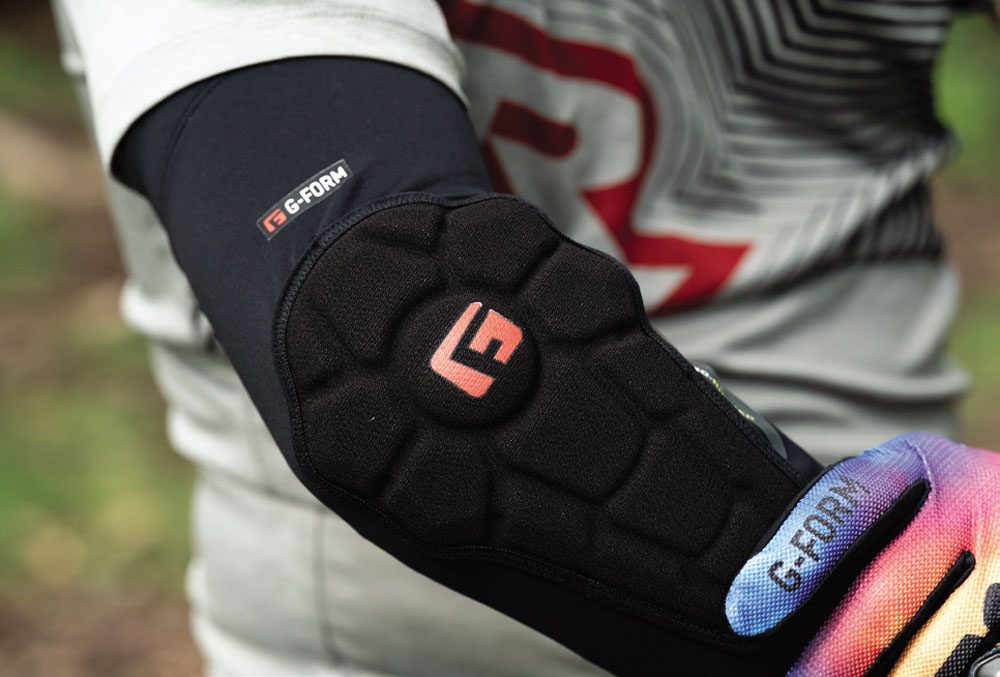
The G-Form Pro Rugged knee pad is similar to what I owned earlier, it’s a Lycra-style sleeve with SmartFlex around the knee. On this version, it is all a little thicker than previous G-Form pads I’ve owned but the idea is the same. The Lycra sleeve material is also different to my previous pair, this feels like it’s both thicker and softer too. They have also added a compression quality to the sleeve material which helps with the goal of keeping them in place. Putting them on, I was once again impressed with how comfortable these pads are to wear. They really do fit like a glove (their gloves fit great too, as you’ll read later) and they don’t have any noticeable itchy spots from Velcro or material bunching. I’m really not sure if you could make a knee pad comfier than these. I actually forgot I had them on while I was wearing them, writing the review! There is an upper Velcro thigh strap to tighten if you need it, but the silicone strip around the top and the bottom, combined with the natural stretch and compression of the sleeve, mean that they stayed in place perfectly, so I never really needed any tension on the Velcro.
The pads are left and right specific, with the SmartFlex zone angling outwards as it moves down your shin, which puts it in a better position to protect against scrapes that would probably come from the outside of your leg. In terms of protection, they really are all about the knee; they don’t offer anything in terms of impact protection outside this zone. These are going to really appeal to enduro riders and those looking for something they can ride all day in, comfortably.
The elbow pads are, well, like the knee pads but smaller! The Pro Rugged elbow pads pack all the same ideas into a slimmer, elbow-friendly package. Same SmartFlex padding covering your elbow but extending a little further down to cover your forearm as well.
We also had the Sorata gloves on review at the same time. These apply the same SmartFlex material found in the knee and elbow pads, but minimally, to the outer edge – just that spot where you are most likely to smash into a tree on that corner you misjudged. We had the Tie-dye colour way, but they are also available in black, blue and green/ grey. Apart from where the obvious armouring is, they are a lightweight, slim fitting glove that feels great. Though you can definitely feel the armouring on the outside of your hand when you are wearing them, they strike a nice balance between offering just a bit of protection in the most likely impact zone, without going so far as to feel like you are wearing a cricket glove. There is no Velcro closure which is a personal preference thing, but I found they had plenty of stretch around the cuff, they went on and off easily, and the cuff band felt great – a little wider than other gloves I’ve had in the past.
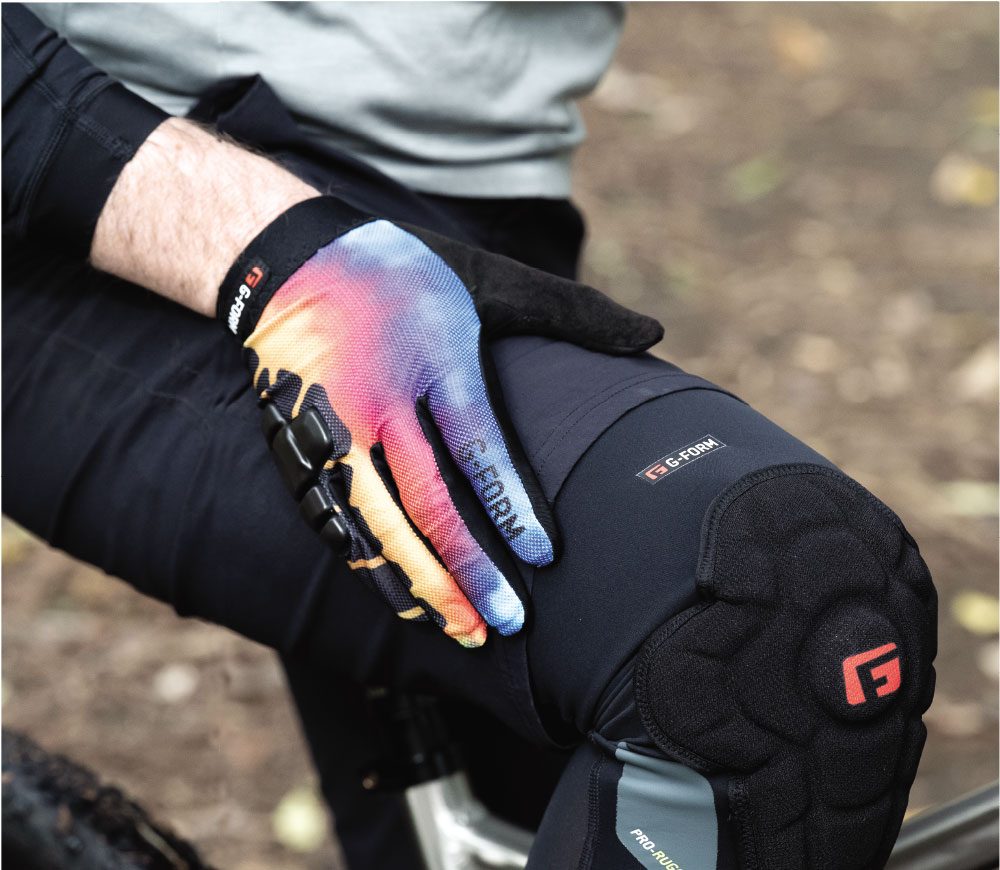
Out on the trail with the whole kit on I was really impressed with how comfortable everything felt. Other knee pads I’ve owned either seem to slip down or need to be tightened up so much it feels like I’m losing blood supply. These felt great. What is more, even after longer rides I didn’t feel like I had discovered the chafe and rub that some pads give. A big part of this, I think, is down to whatever they have done to improve the sleeve material and make it feel less Lycra-y, and a bit more like a nice pair of my wife’s yoga pants. Trust me, it’s comfy stuff, and it stops the areas underneath the armour zones rubbing against your skin. I’d happily wear these for an all-day enduro where I knew I would have to be putting in some serious pedalling throughout the day. The same went for the elbow pads and the gloves – no news is good news! When you don’t have much to complain about, there is sometimes not too much else to say. It does what it says on the tin! They weren’t too hot, the fit was spot on, and they stayed nice and comfortable all day long. Is there much more we’re looking for in our gear? Highly recommended.
REVIEW: LANCE PILBROW
DISTRIBUTOR: EVEROUTDOOR
RRP: SORATA GLOVES $59
RRP: PRO RUGGED KNEE PADS $149
RRP: PRO RUGGED ELBOW PADS: $139
CJ suspension
One of the anomalies of our sport is that it’s becoming increasingly common for riders to outlay close to $10,000 on a new bike that boasts the latest, fractional evolution in suspension design. But, when you ask people what the maintenance regime of their actual suspension components has been in the past, it’s not uncommon to get a slightly embarrassed response such as; “I’ve never had my forks or shock serviced” or “hmm, now I think about it, I guess it has been a couple of years”. There are a few reasons for this. Tuning derailleurs to work is beyond plenty of riders’ mechanical confidence levels. And suspension? Surely that is the darkest of the dark arts when it comes to bicycle maintenance.
Well, if it’s a dark art, then that must make Cam Johnson, of CJ Suspension, some kind of wizard, because working magic on forks and shocks is what he is all about.
Working from a humble home workshop in Queenstown, Cam is at the epicenter of mountain biking and has built a solid reputation amongst hard riding locals, and others around the country, as one of the go-to suspension service technicians with the goal of helping riders make massive gains in how their suspension performs.
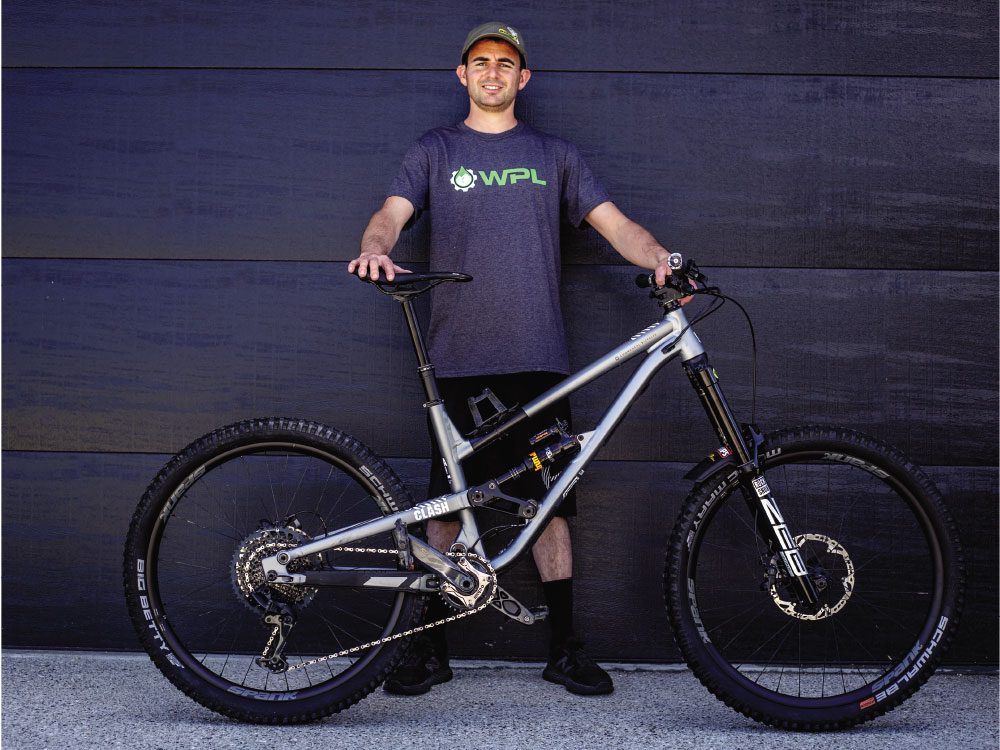
For Cam it started over 15 years ago when an after-school job with Al Heine, at Blue Shark — the NZ distributor for Fox Suspension — led to him getting the opportunity to be trained in pulling forks and shocks to pieces and putting them back together properly. At this stage he, like many keen young riders, was trying to make it on the race circuit. “I’d work with Al at Blue Shark over our summers, then pack my bags and head over and race the European summers,” says Cam. But, as much as this is a dream for many young aspiring riders, what it really takes to ‘make it’ — to break through the privateer ranks and get a professional contract — was a reality check. “I got to the end of pushing the envelope on the DH circuit; the racing, the crashes — they really took their toll on me and I just decided it was a good time to exit that season. I was pretty burnt out to be honest. I felt I’d given the racing a good go but ultimately, for me, it was in the too hard basket. You push, you push, and you push, and eventually I just felt like ‘this isn’t actually working for me.’” Cam explains. Ultimately, it was another injury sustained on the race circuit that was the final straw. “In 2014, I came out of a shoulder surgery, and I just felt [a sense of ] ‘I’m over this.’ The number of injuries and time it took to recover — I was just at the point in my life where I needed a change.”
This prompted a necessary reflection on what Cam wanted to do next, and with his background in servicing already well proven — and realising this was in fact a part of the industry that he both enjoyed and believed he could maybe even make a living on — the decision was made. “My old man told me I wasn’t able to sit around at home, so I told him I would start my own business, and he looked at me and said, “yeah, all right, do it”. I never really thought it would take off, but it did.”
The early days were all about trying to keep overheads low whilst building a business. This meant CJ Suspension started in a humble sleepout Cam built, perched on the backyard of a friend he was flatting with. This was fine for a while but, as Cam confirms, it still wasn’t really turning over what he needed to sustain himself. “After a while, I’d built a great collection of tools, but hadn’t really made any money — it just seemed like the market wasn’t big enough. I just wasn’t doing enough volume.” Necessity is the mother of invention they say, and CJ needed to increase revenue, so Cam started to explore the growing market for moving beyond mere servicing — changing oil and grease — to performance enhancing additions that could be made to the most popular suspension systems. “I wanted people to really notice the difference each product made to their ride.” After countless hours of personal research and riding he ended up picking up the agency for brands like Vorsprung, O-Chain, and Rev Grips.
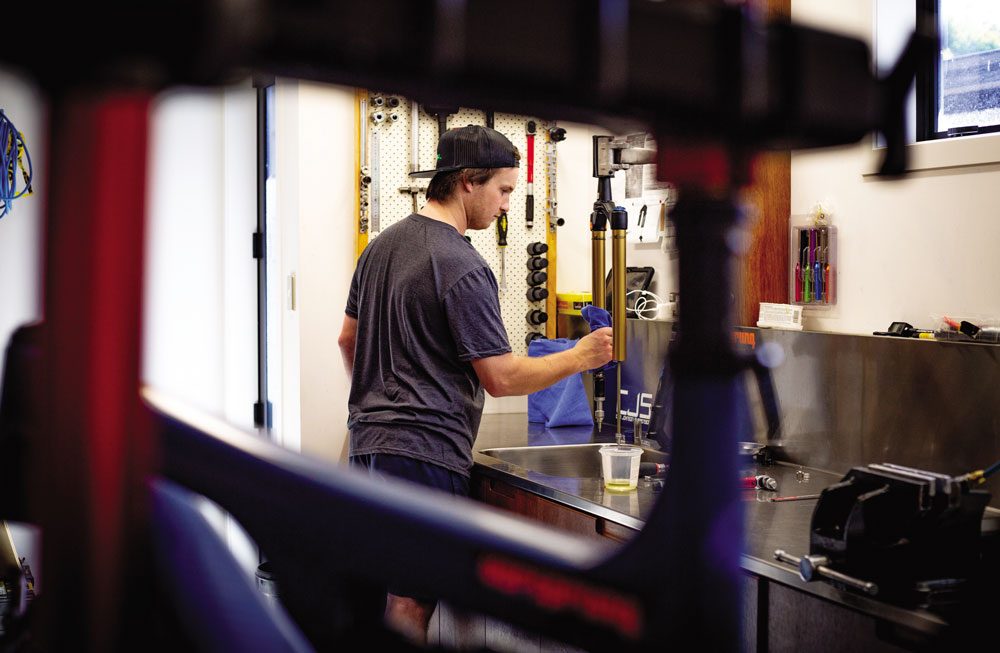
The proof has been in the plushness though, and Cam has now built a steady stream of loyal customers, who after having their forks serviced by him have come to realise the difference that regular servicing can make in terms of the feel of a bike. “We’re seeing a lot of return customers who are really keen to keep their equipment running well, and that’s really satisfying.”
And with the price of bikes marching ever higher, the concept of spending $250 in servicing might not be as unpalatable as it used to be. This is a change Cam has noticed, even over his short time in business. “It used to be that when I asked around, I realised, people didn’t service their gear much. But now I think people are a lot more clued up, and willing to get servicing done, and it’s great to see some bike shops starting to offer that service as well.”
But it’s not just tired, worn-out forks that can use a refresh — even out-of-the-box new forks can be improved. For customers who really know what they are looking for, the Vorsprung options Cam offers can dramatically change the feel of a fork, but as he explains, even new forks may benefit from a once over. “Suspension products aren’t made overnight! The forks on any new bike on a shop floor were potentially produced years ago. They will sit around in a factory before they actually get built onto a new bike, which sits in its own factory, before going on a ship and sitting in a distributor’s warehouse. So, even on a brand-new bike, they have probably been sitting around unused for a year or more before you open the box.” That’s without mentioning the varying levels of quality control on OEM specced equipment. All this is to say, opening your new fork up and making sure oil levels are as the manufacturer intended, and the grease is fresh, won’t hurt at all and may even spare the fork from damage if they get used for a year or more before the unsuspecting owner thinks they are due for a service.
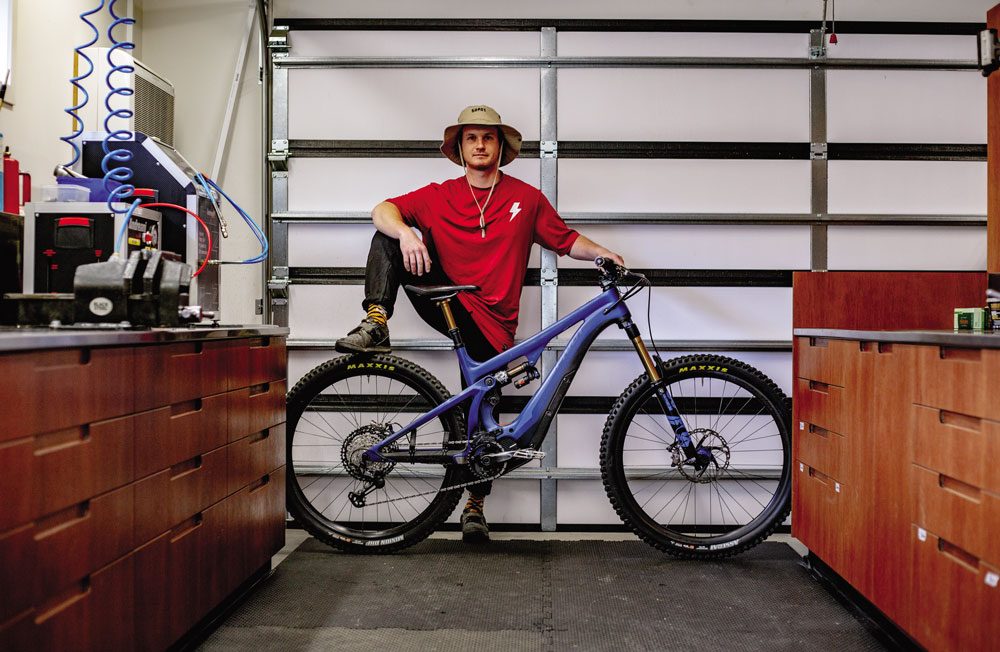
Going forward, CJ Suspension is slowly growing its capacity by training more staff. Cam currently has Kurt McDonald, Eddie Master’s mechanic, working with him full-time but, similar to Cam’s old racing pattern, Kurt will be off with Eddie for the season. As a result, Cam is looking for another staff member to train, and hopes to have enough work to keep everybody on board for our 22/23 summer. Having the capacity to turn jobs around quickly is something CJ has always prided itself on: “Typically, we can get to a job within two days of it arriving to us, which means we can get it back to you by the weekend. This is something we offer that most bike shops would struggle to do.”
From talking with Cam, it’s clear suspension is something he is passionate about and this passion means that every set of forks and every shock that comes across his desk, can be made to work better than they did before. Furthermore, in an age where we are increasingly aware of the raw materials and natural resources that go into making our bikes, it also makes sense to take care of them in a way that makes them perform well for the longest time possible. So, what are you waiting for? If you’ve never had your suspension professionally serviced, you might not know what you’re missing out on.
Words: Lance Pilbrow
Photography: Ryan Lucas


